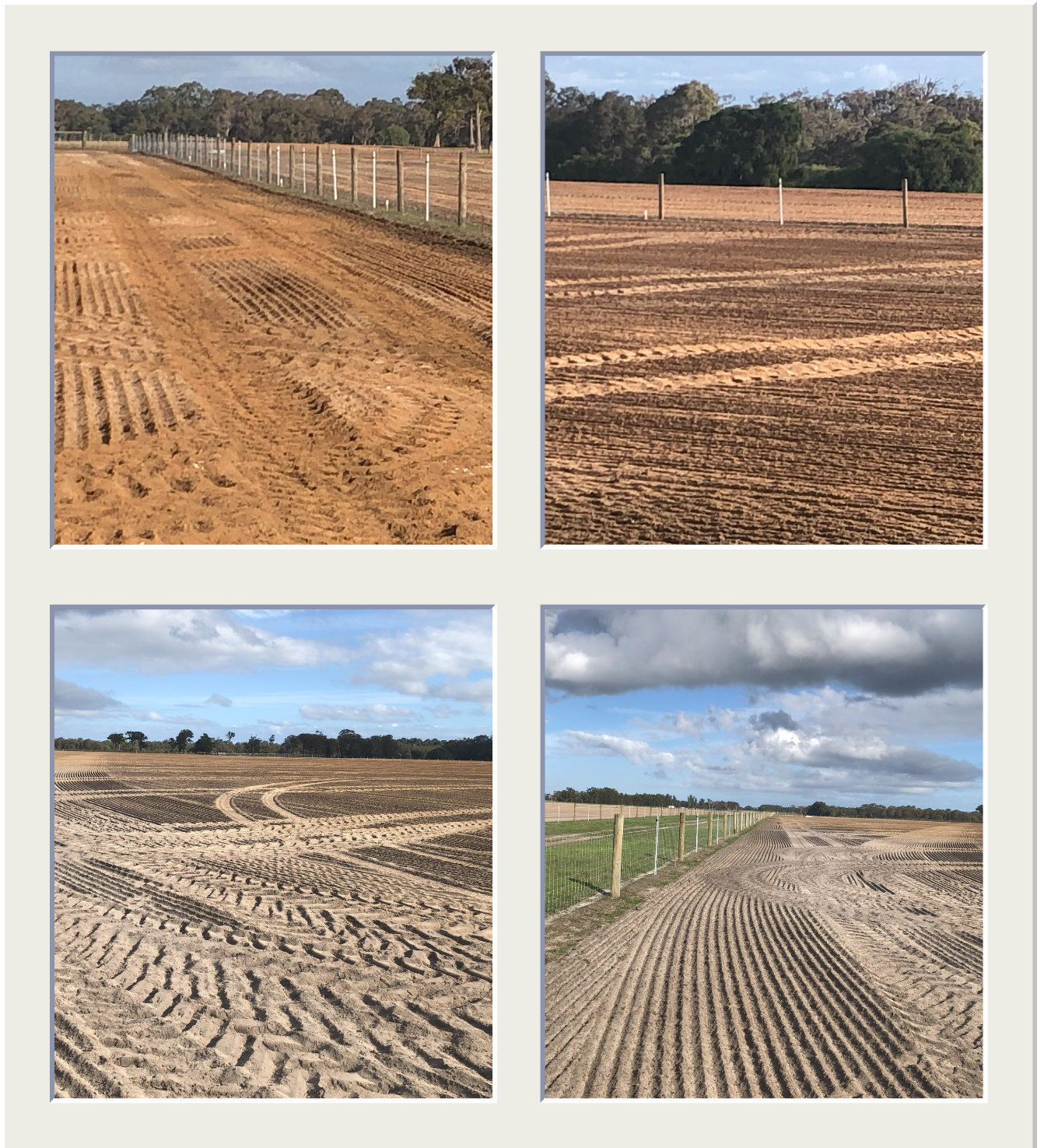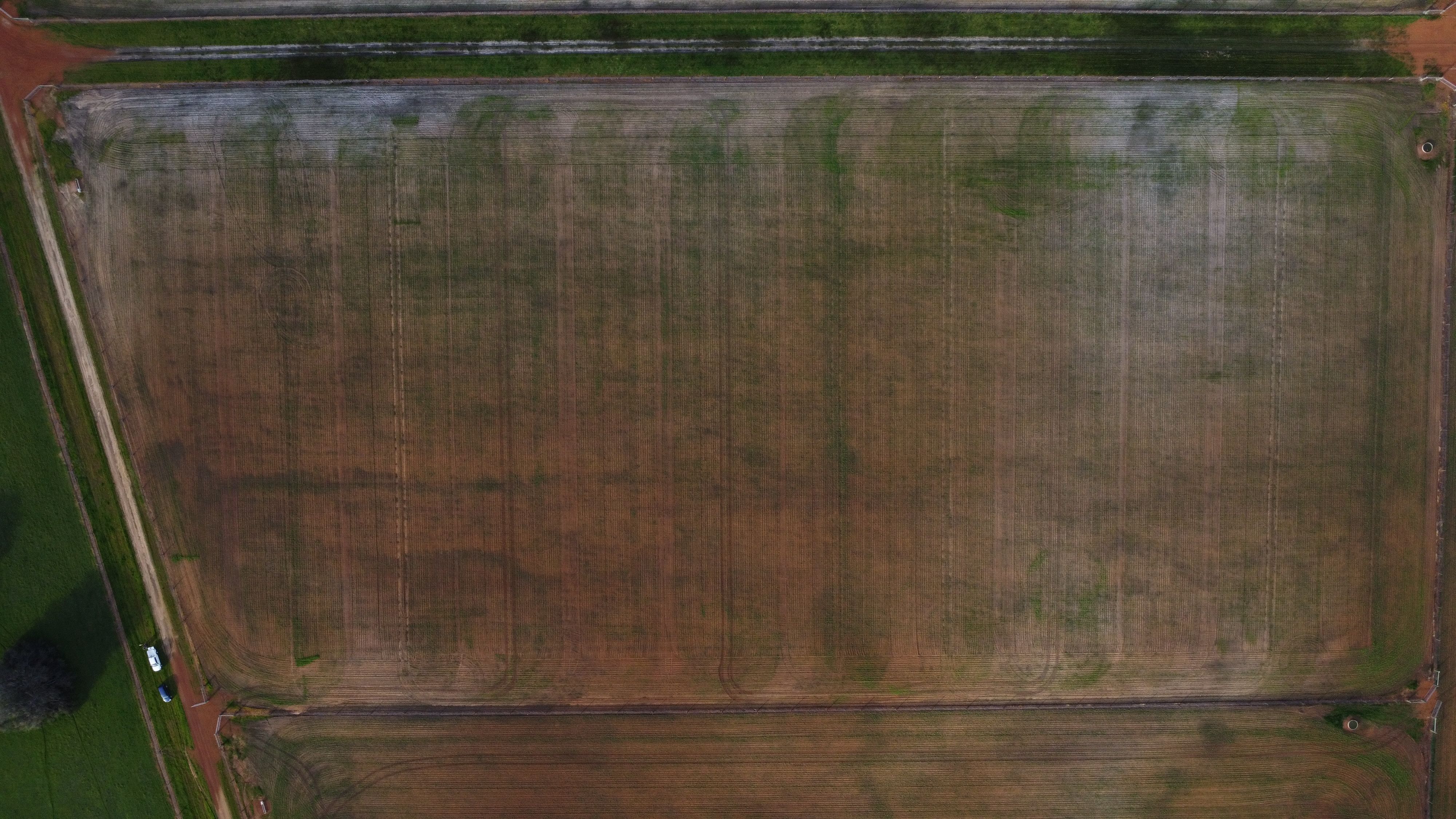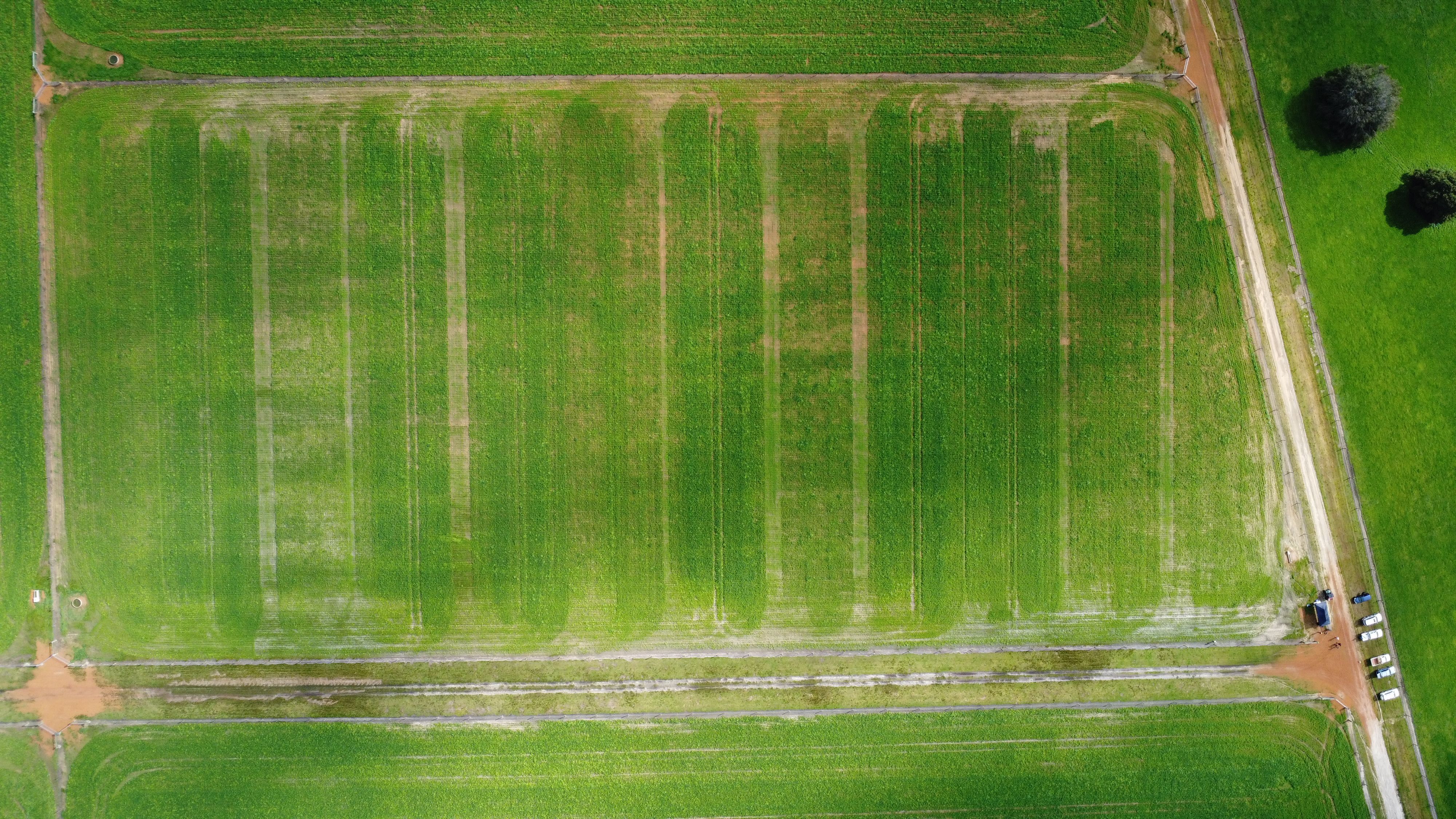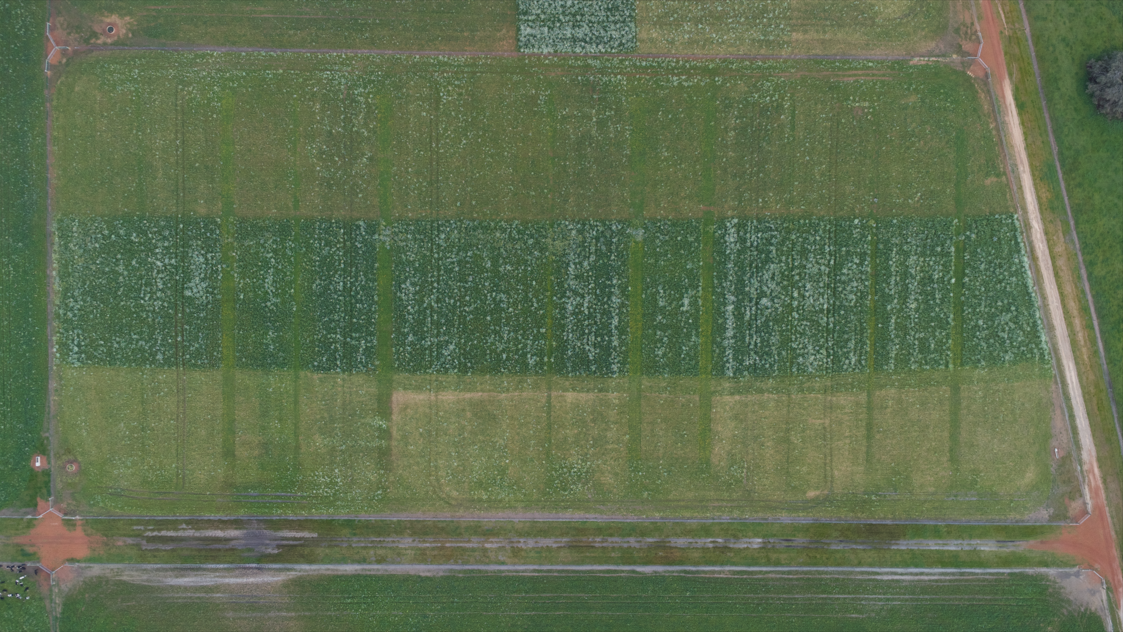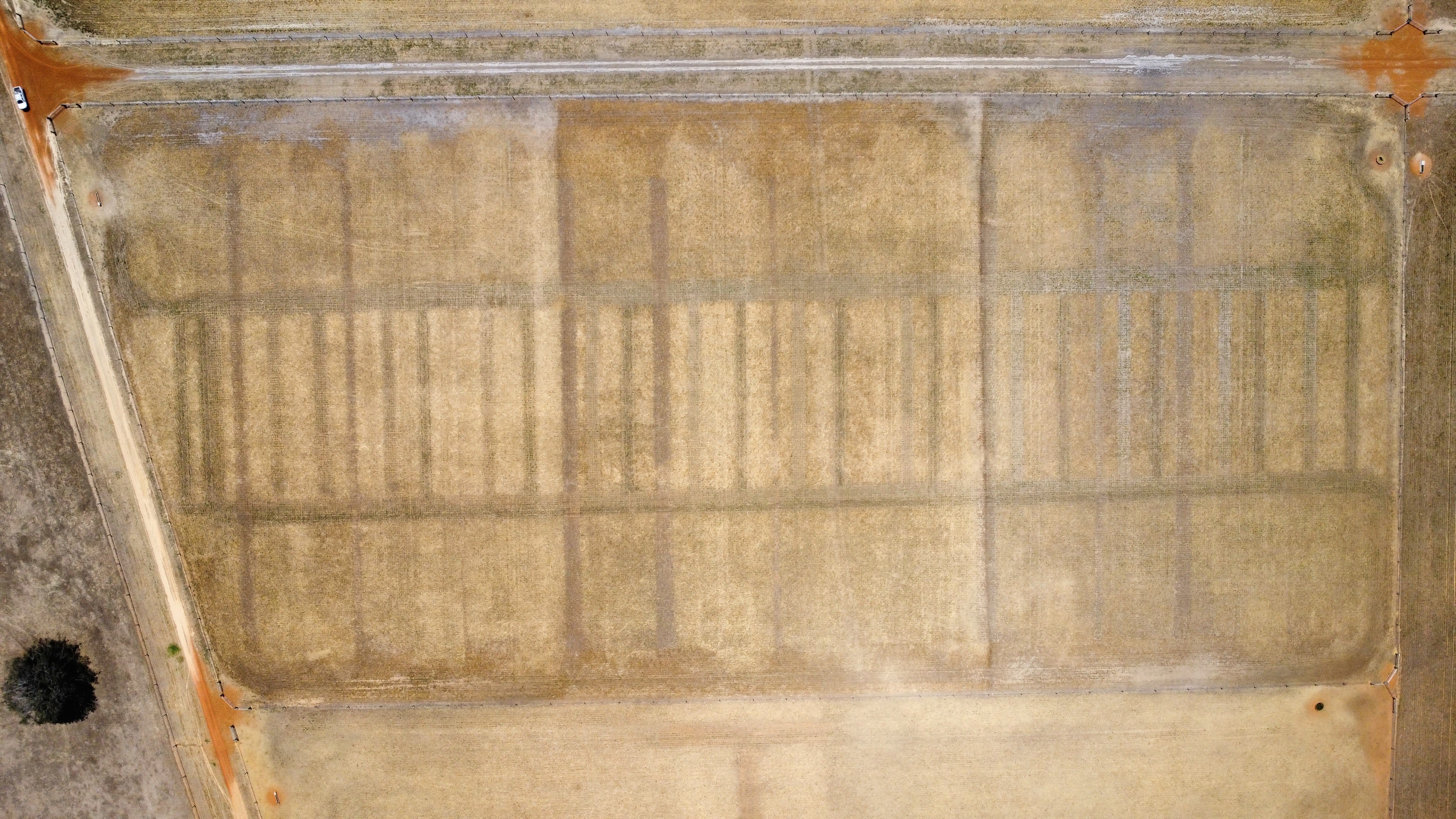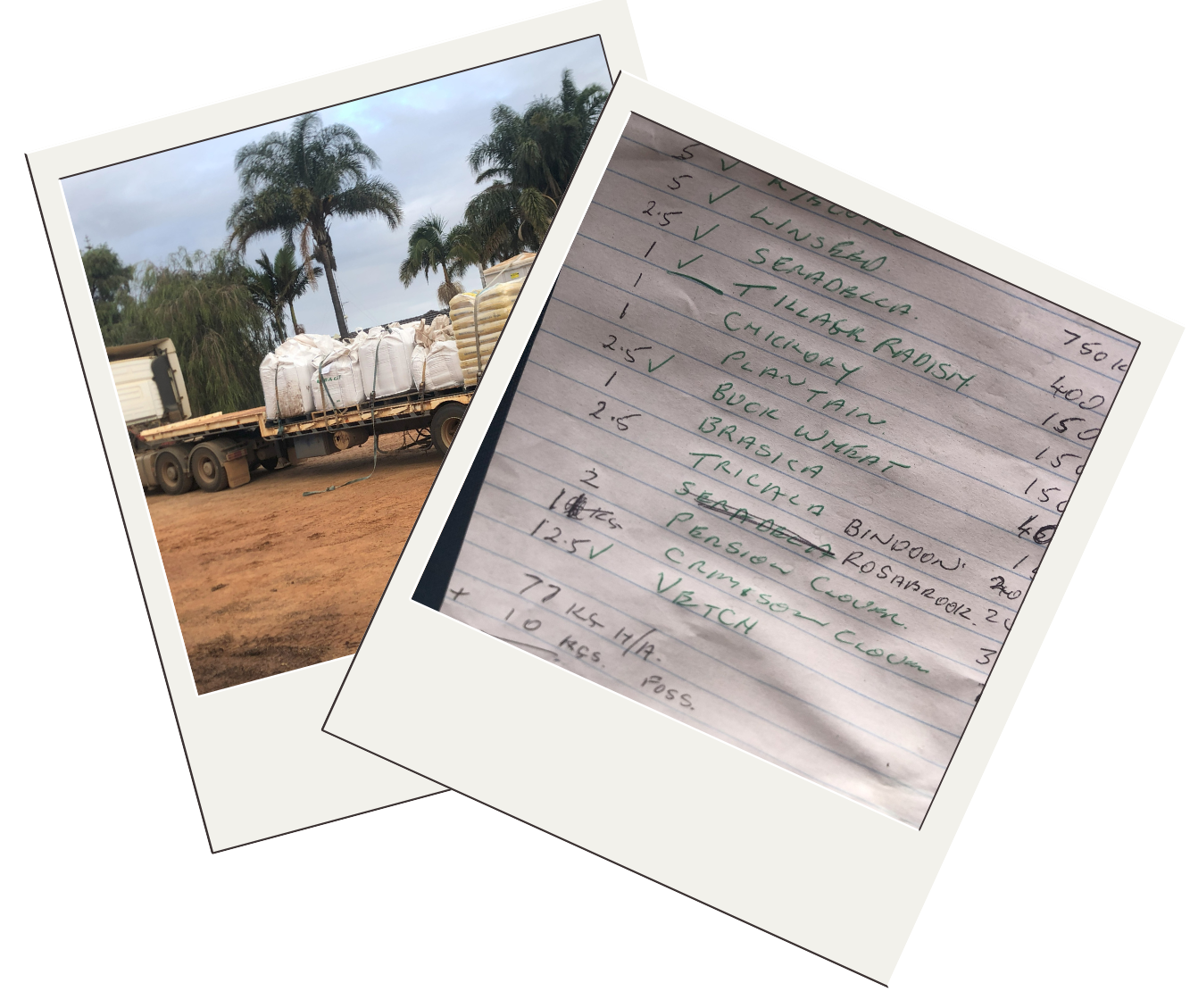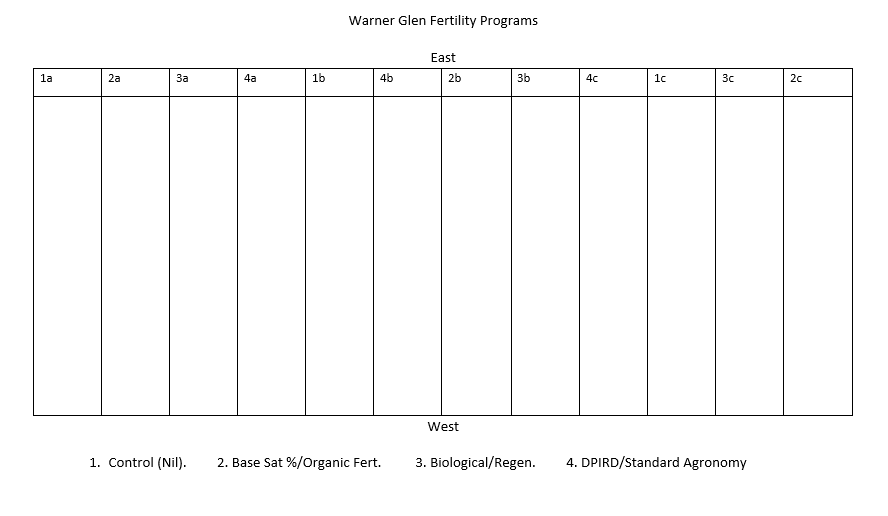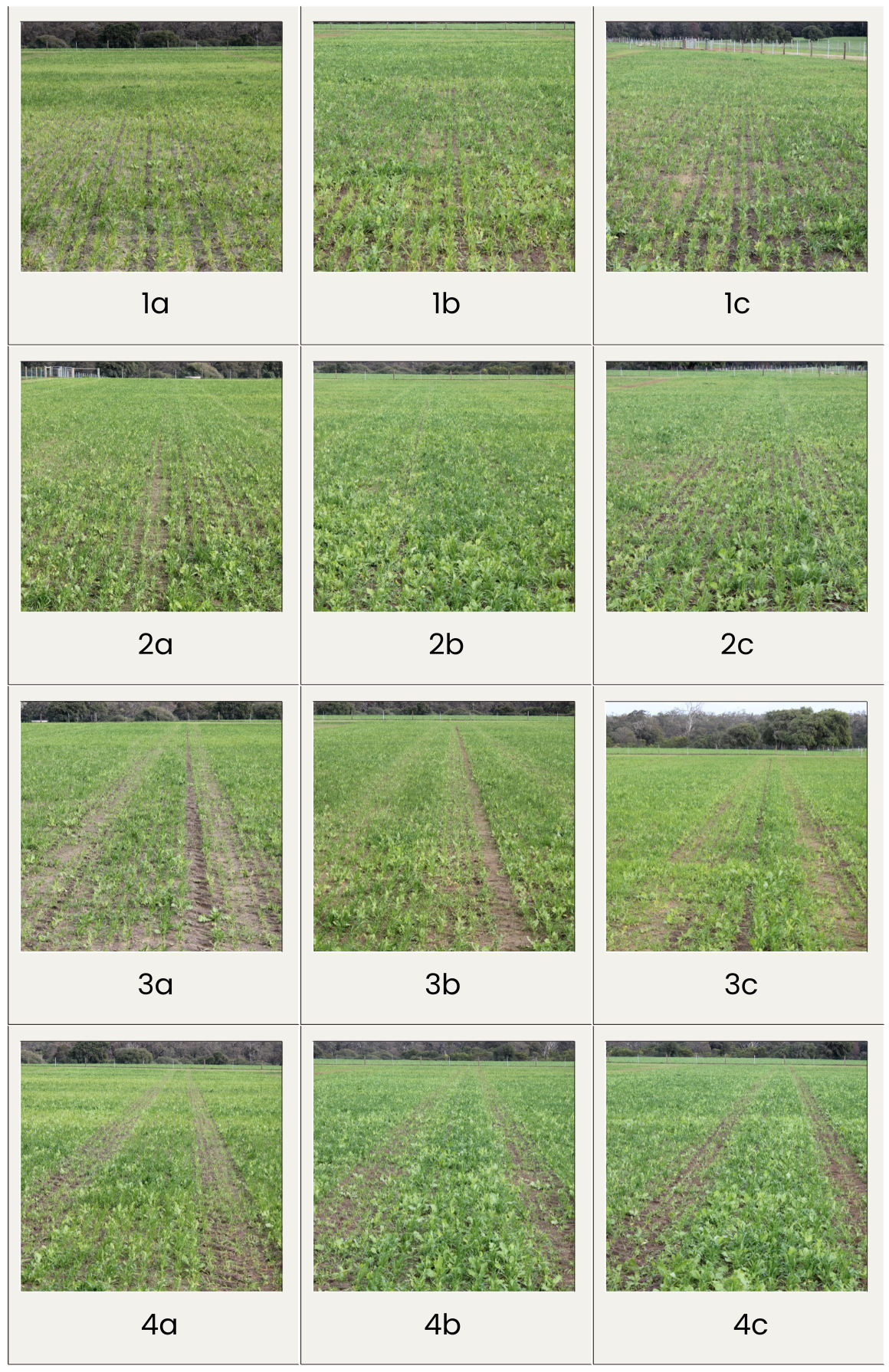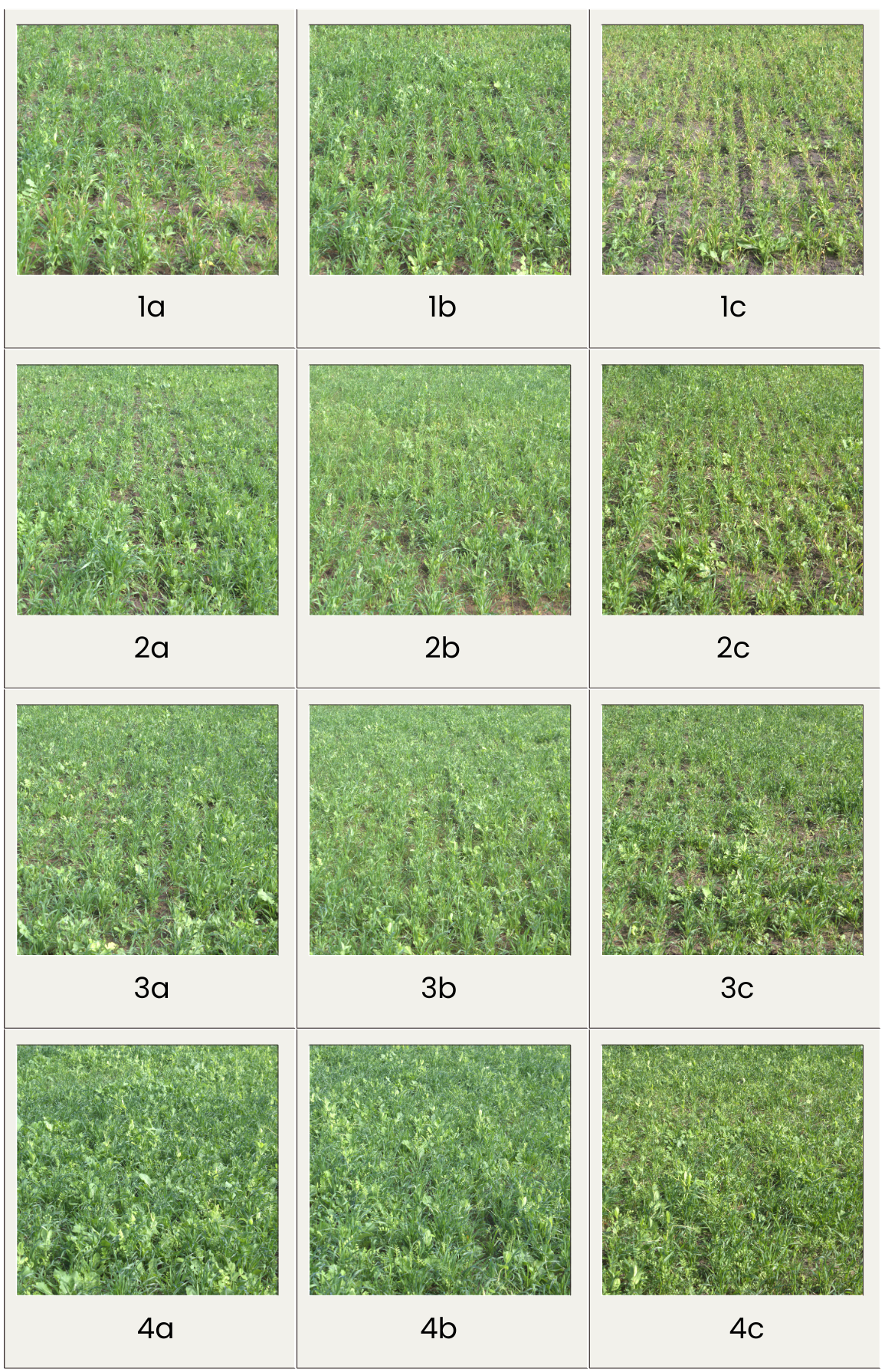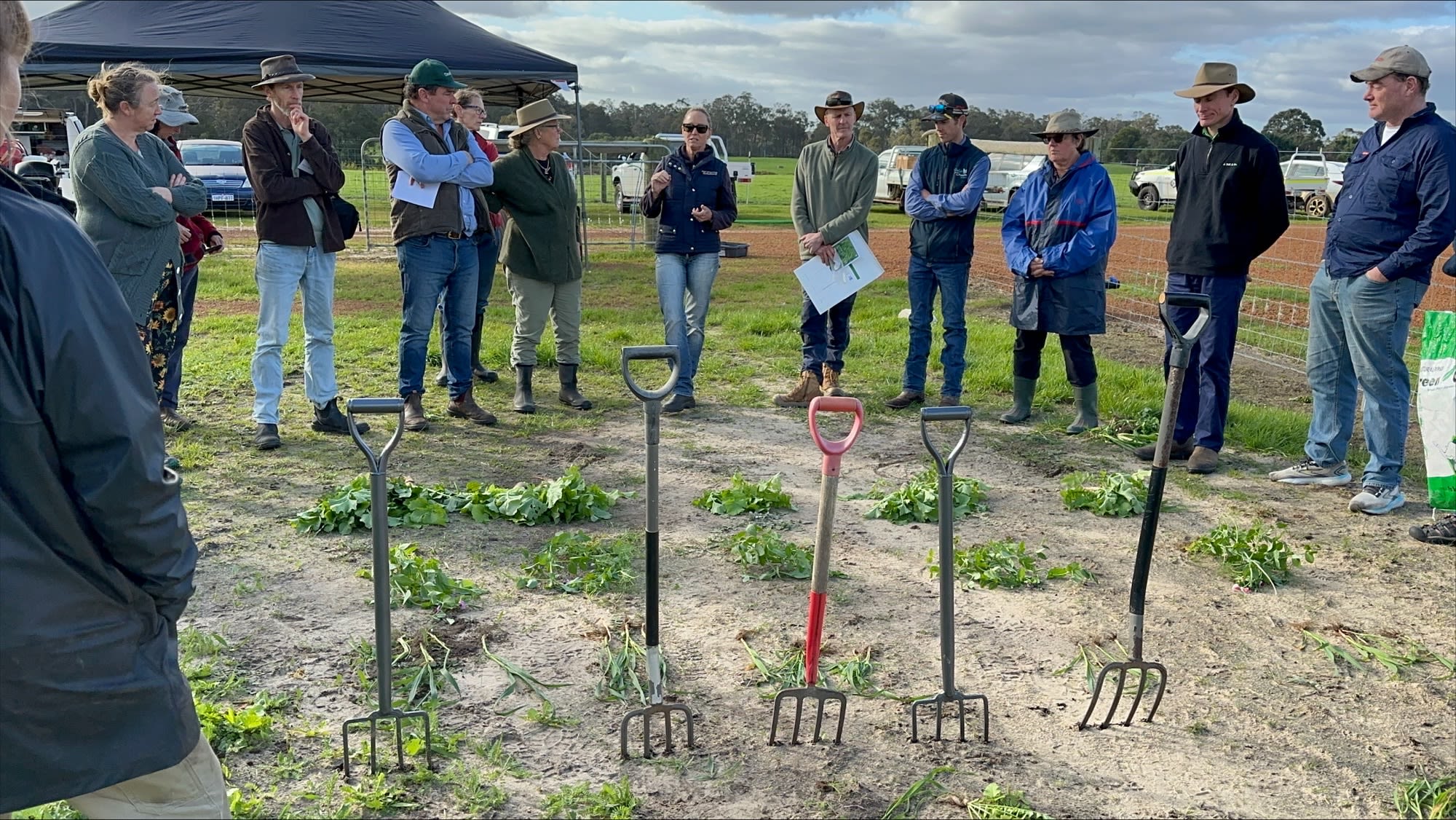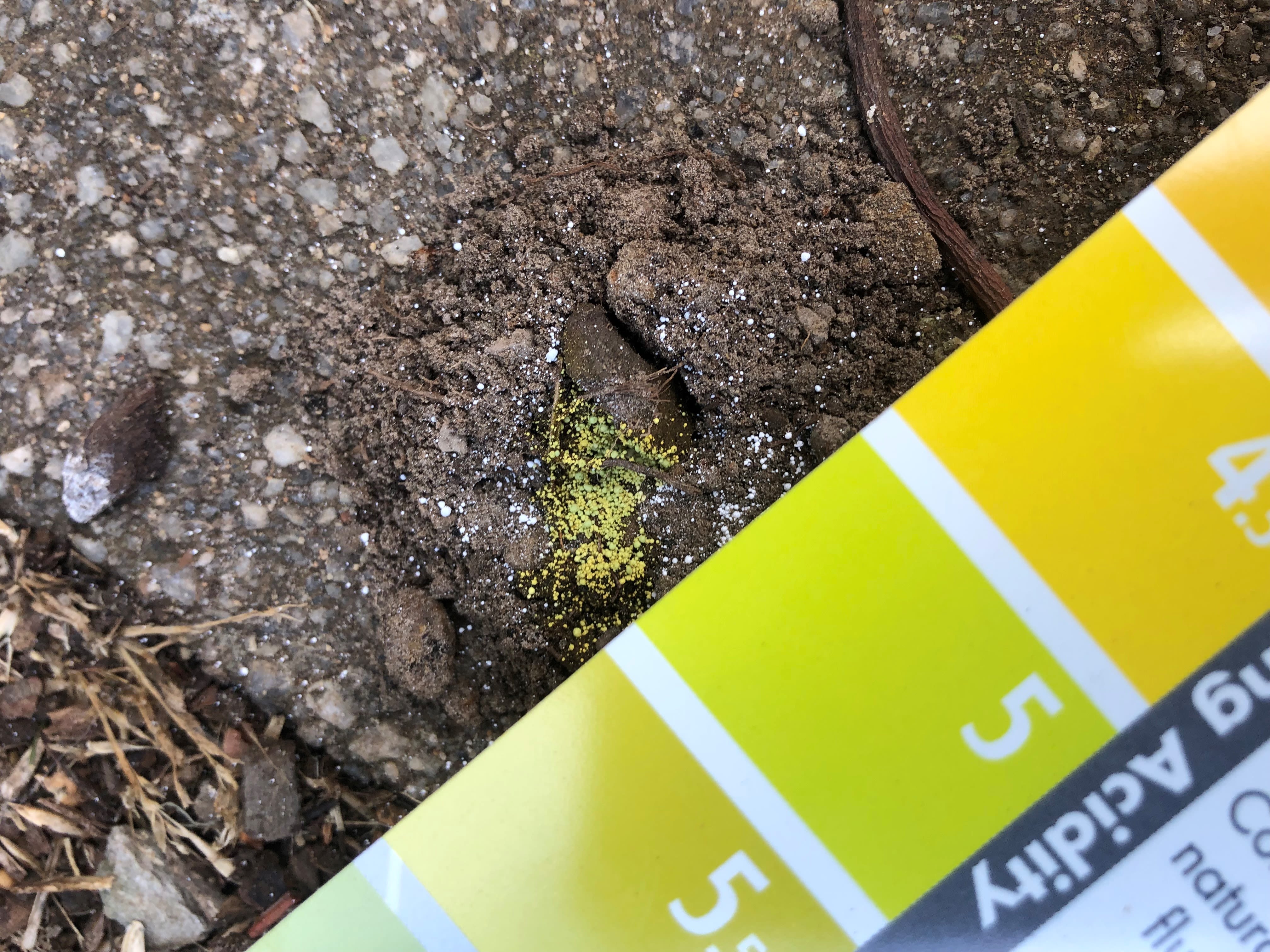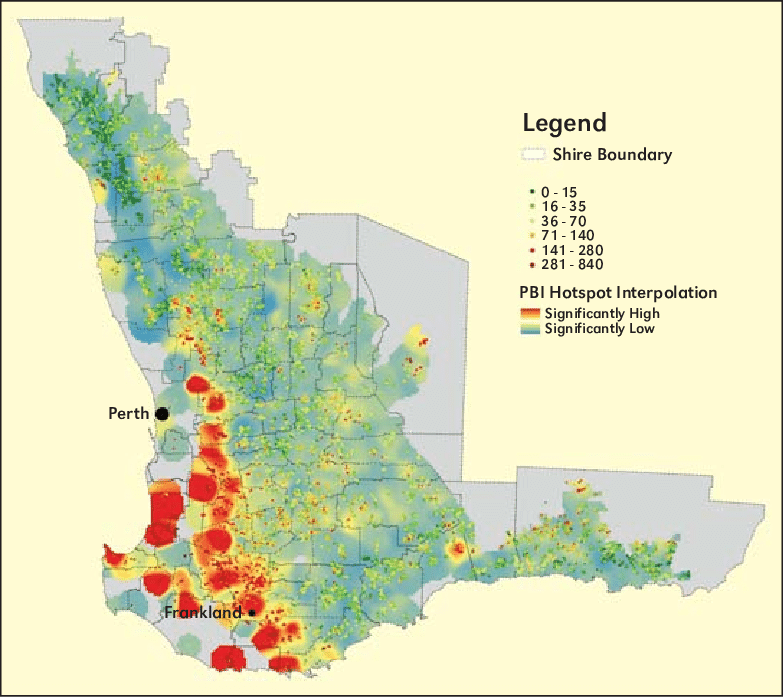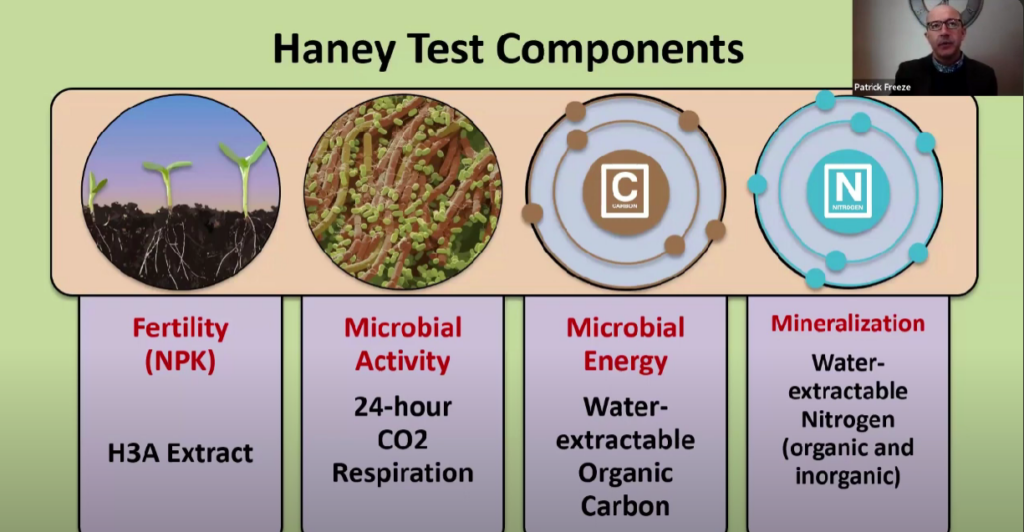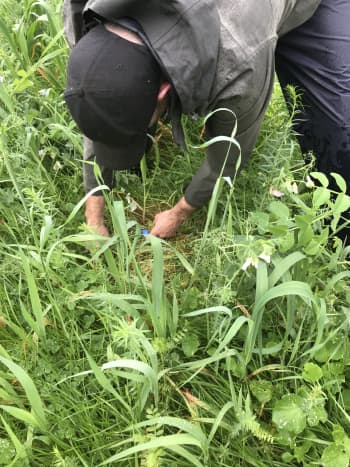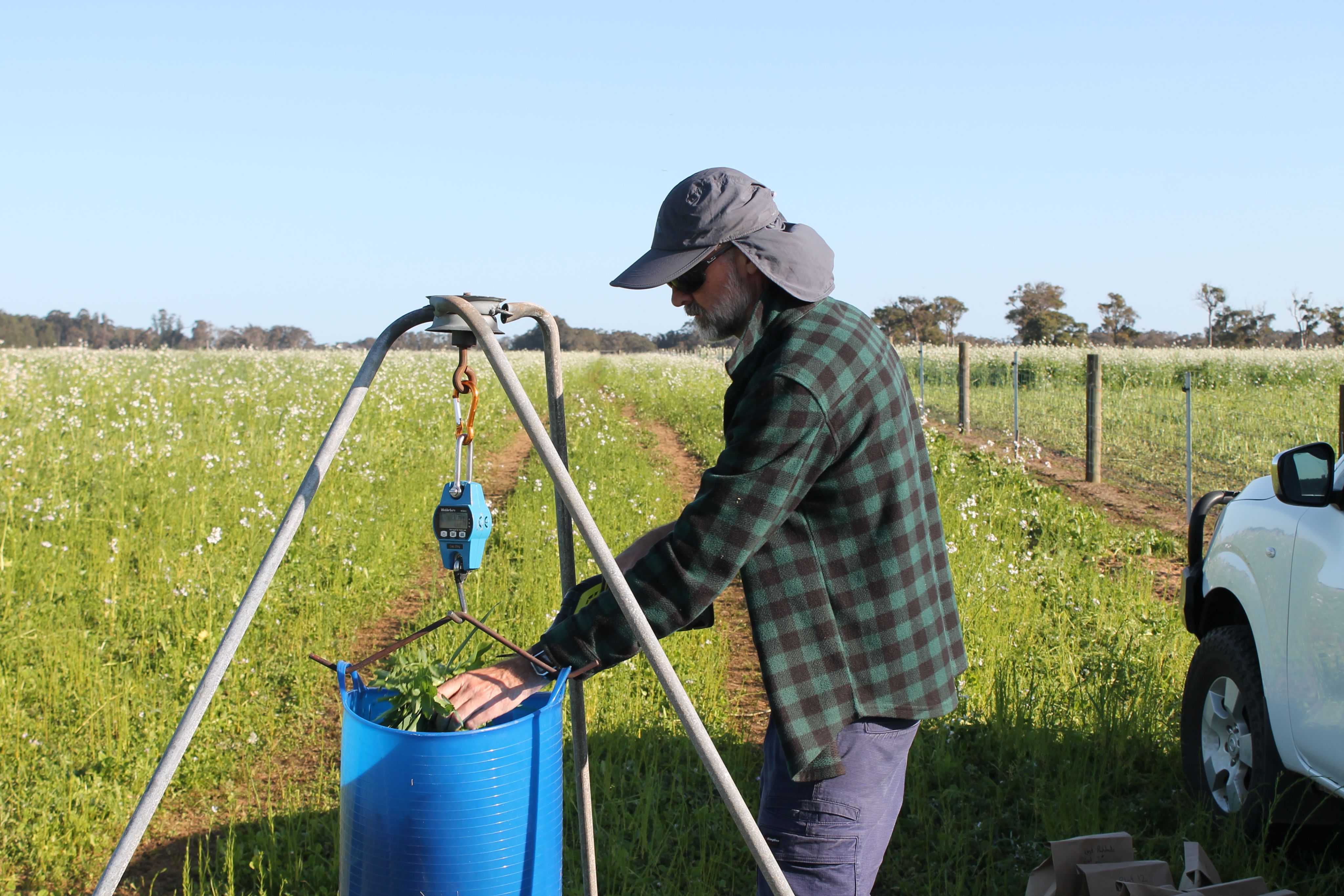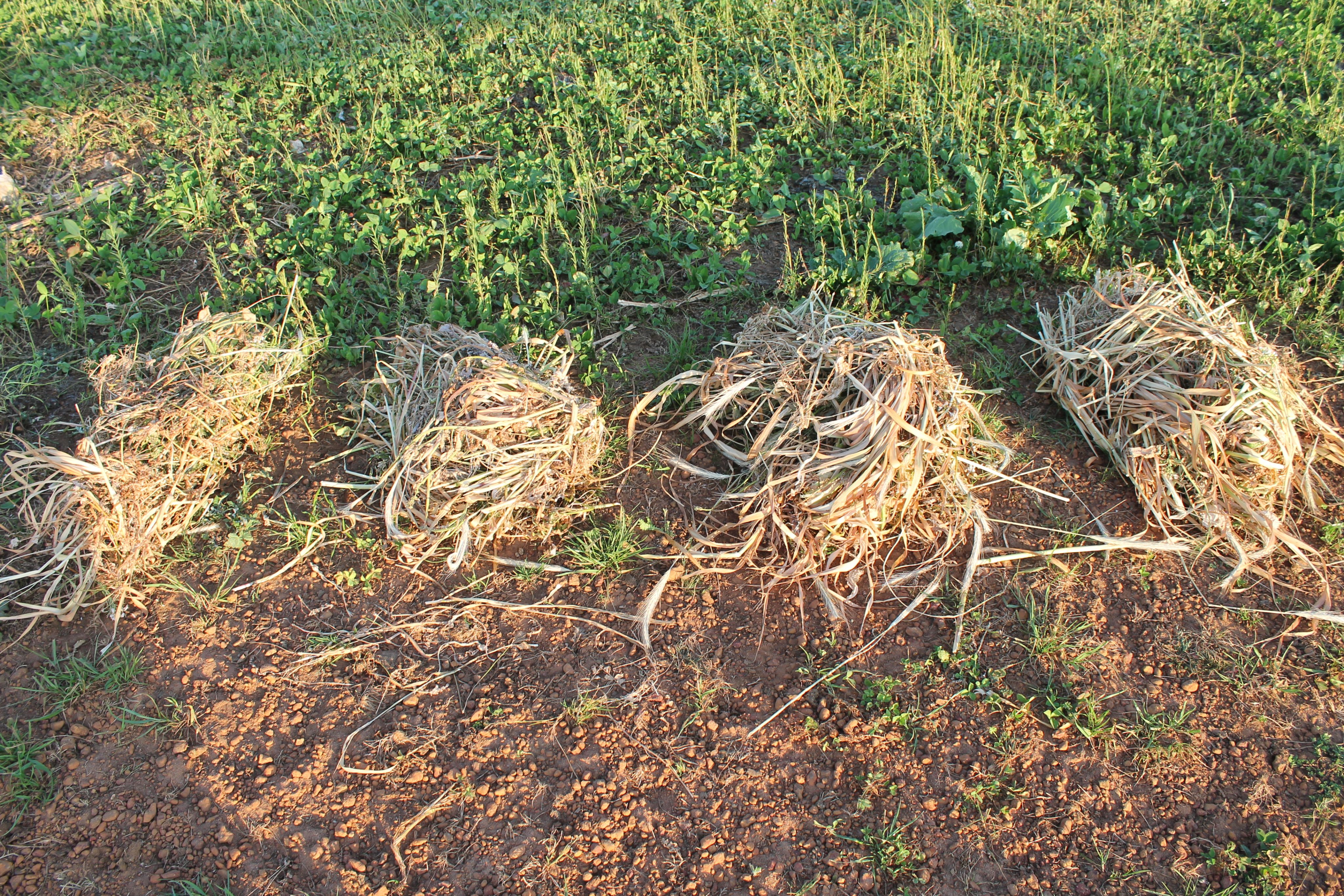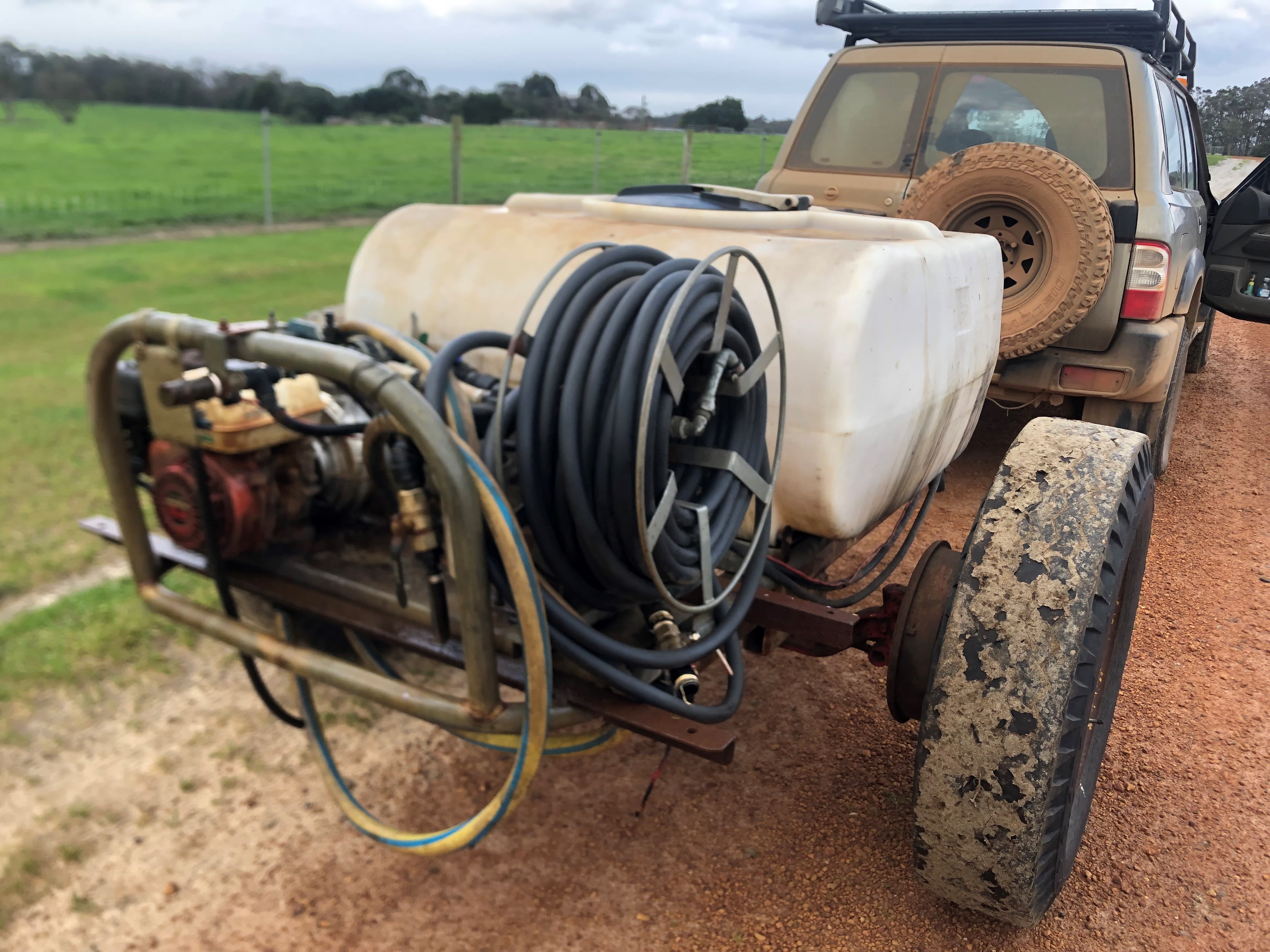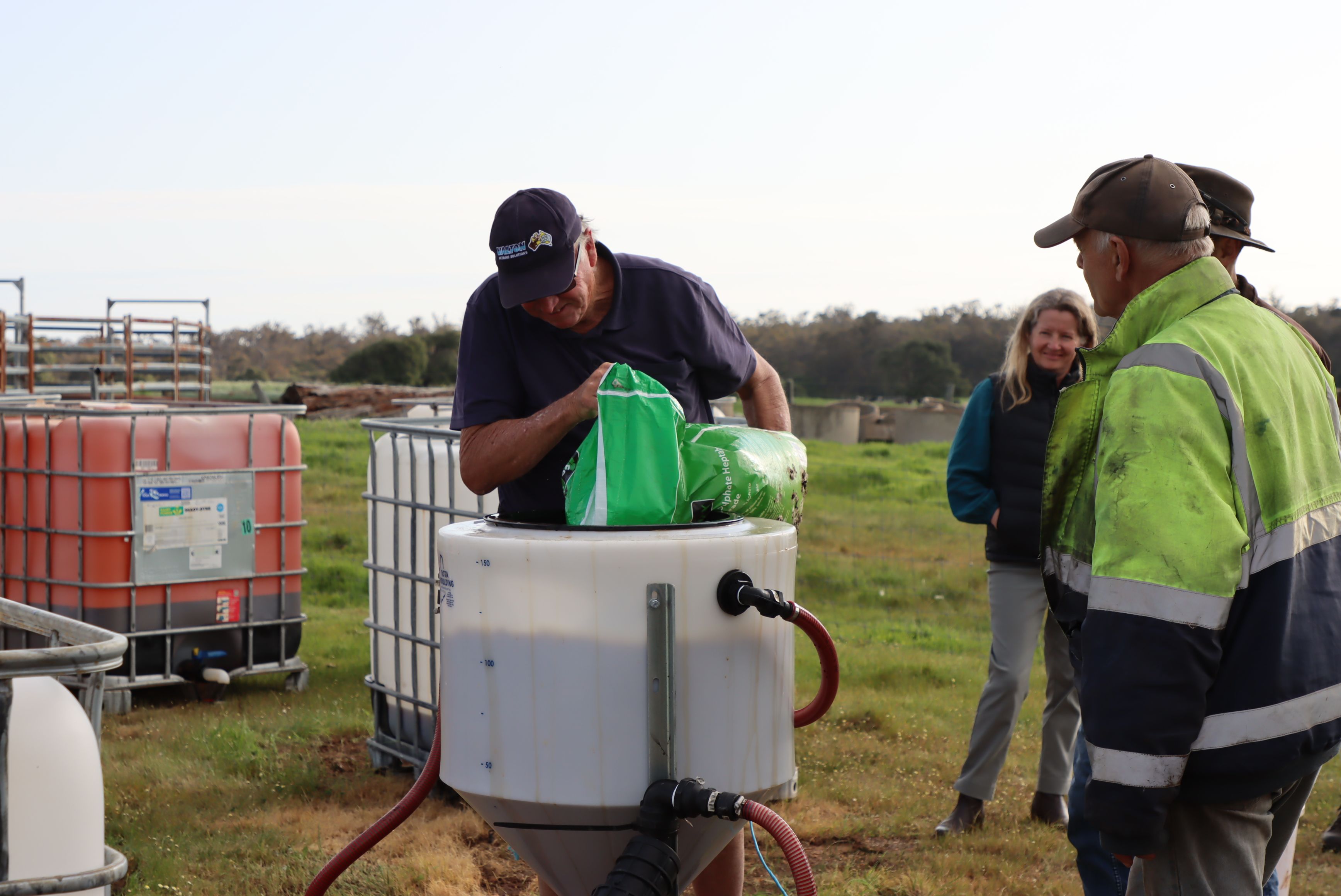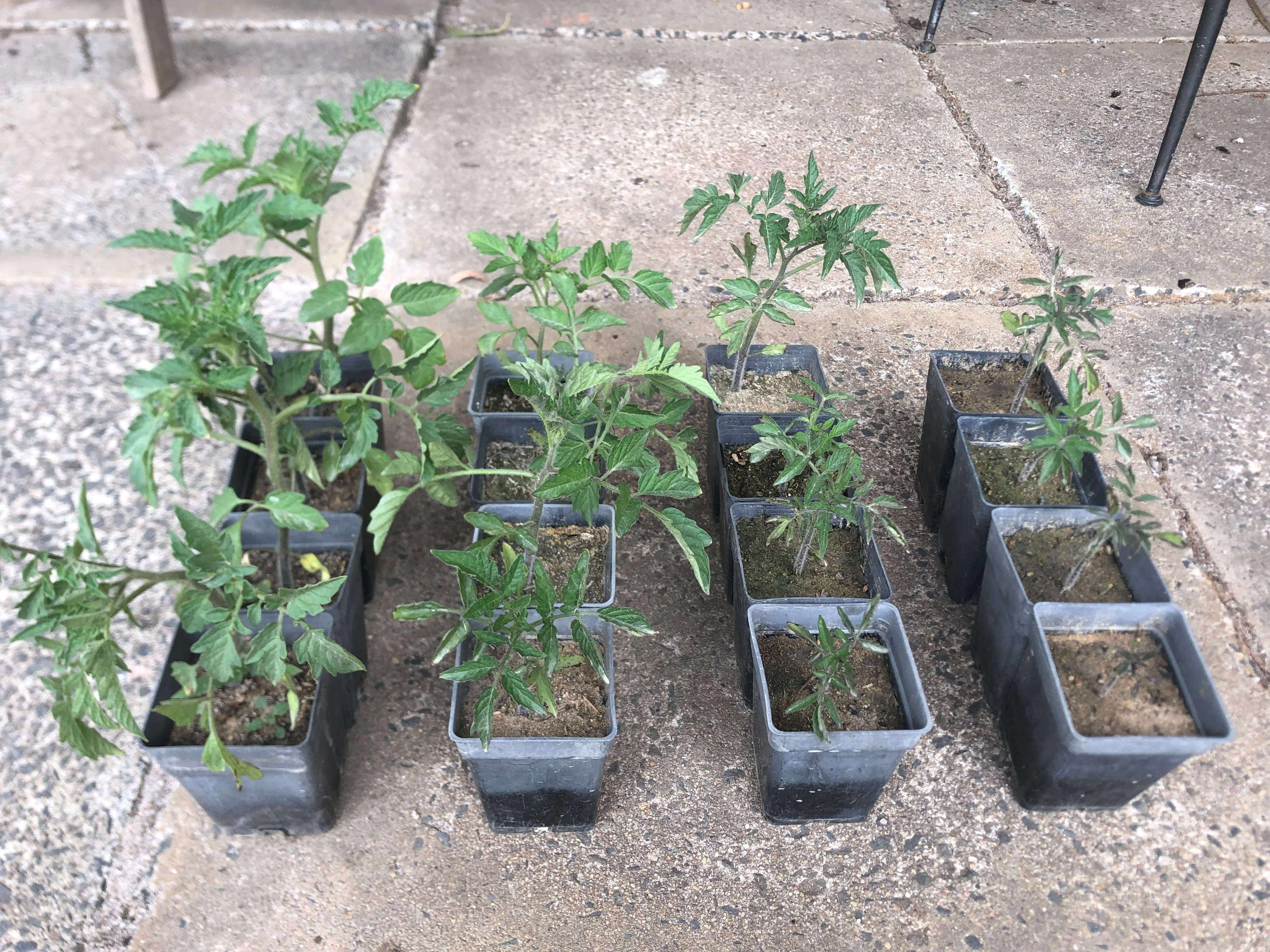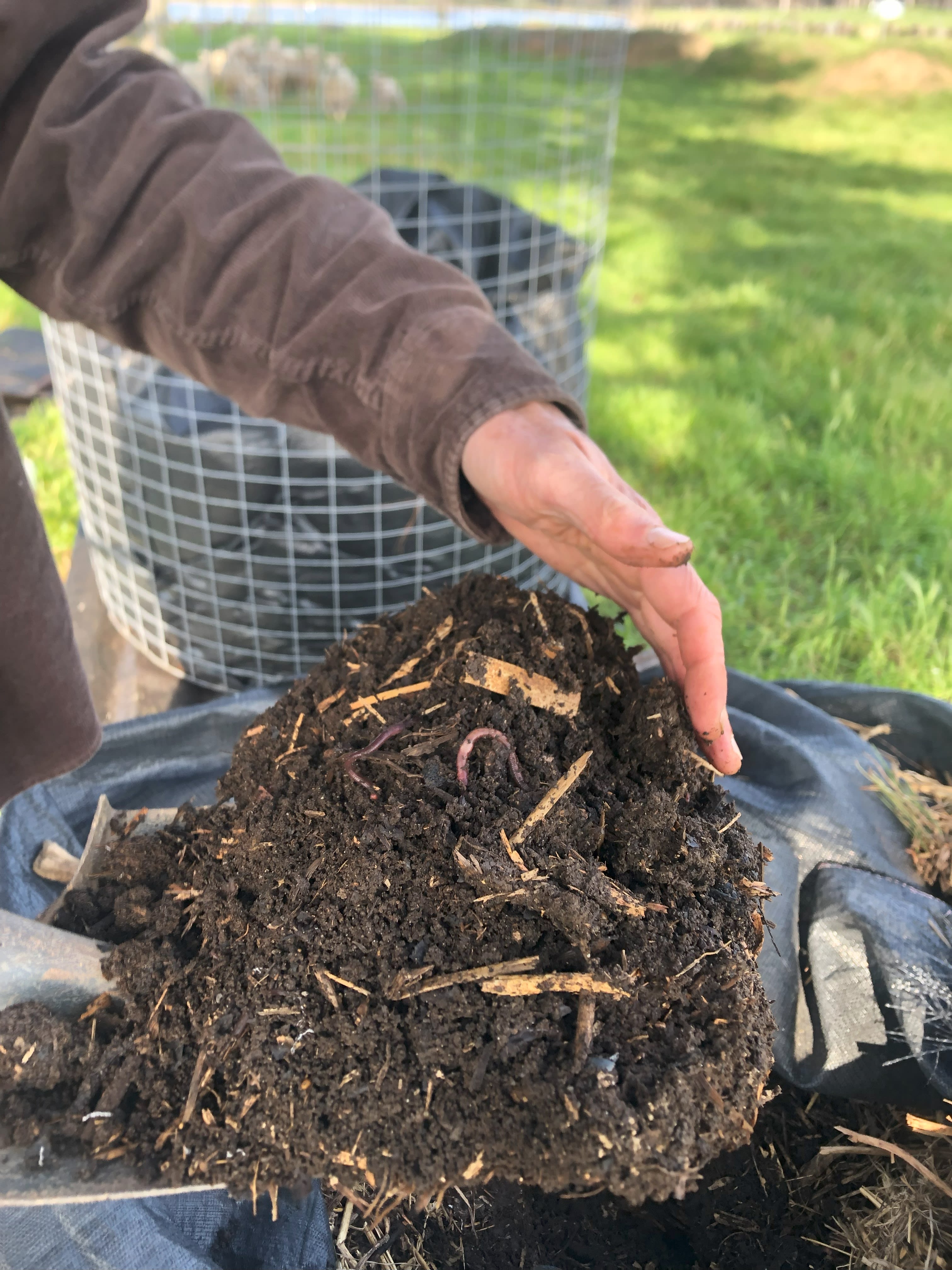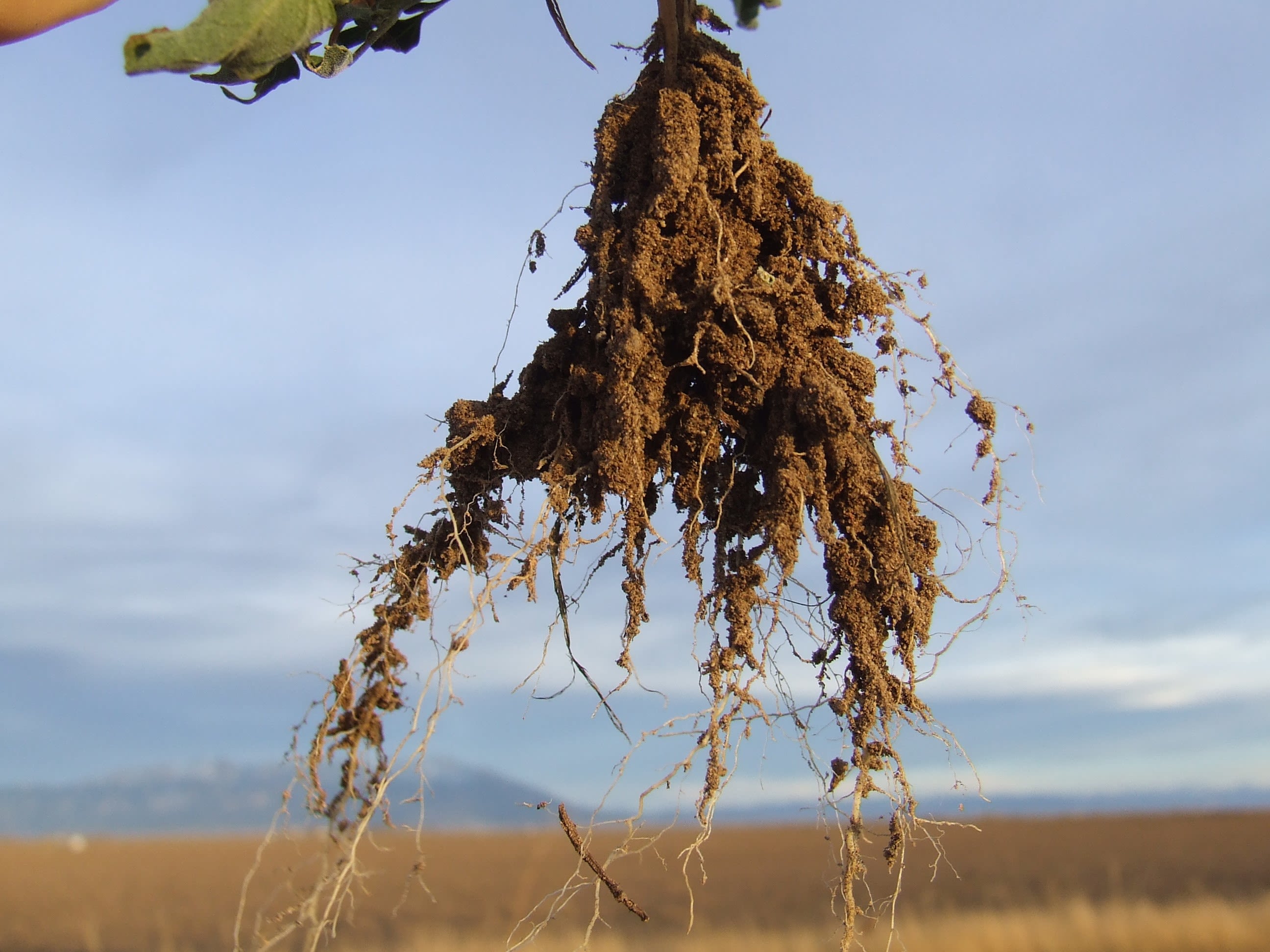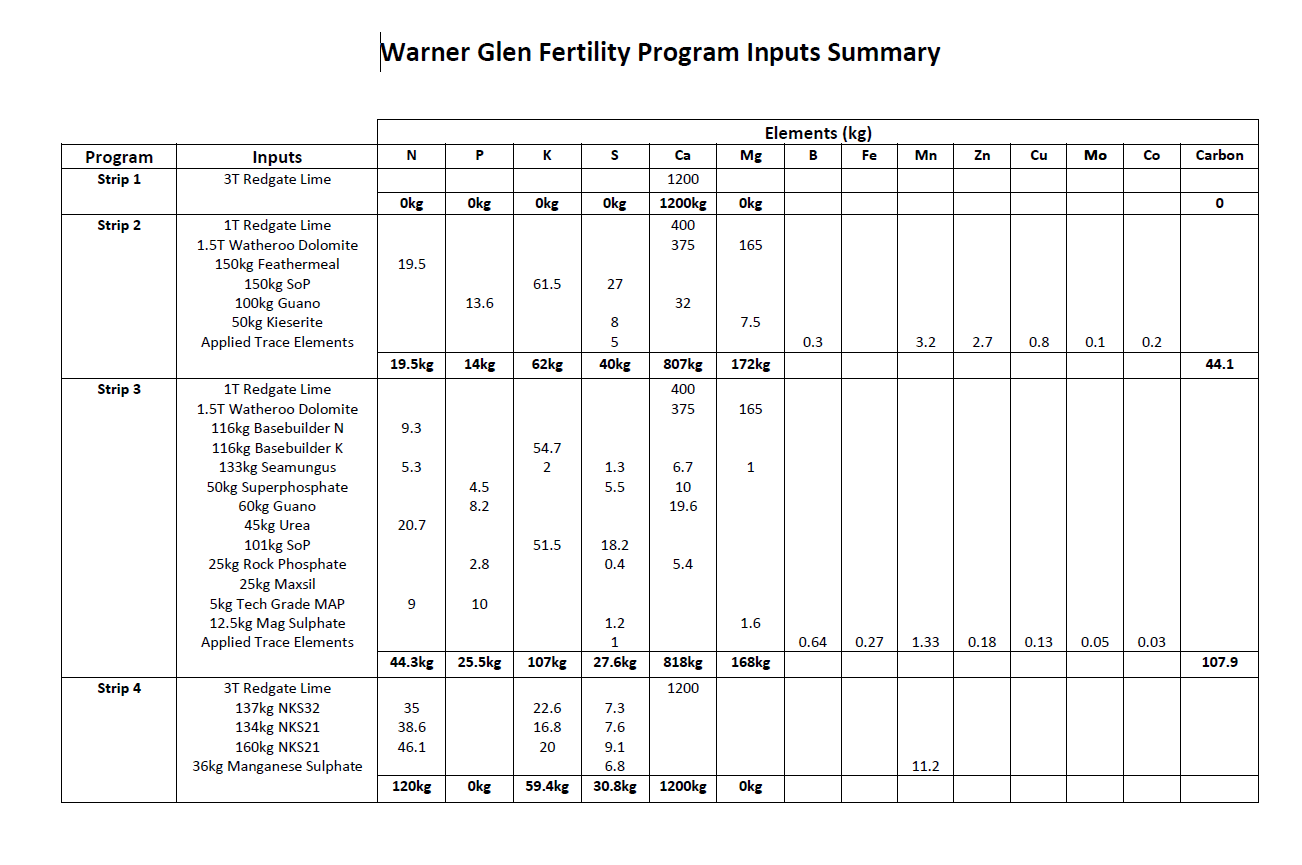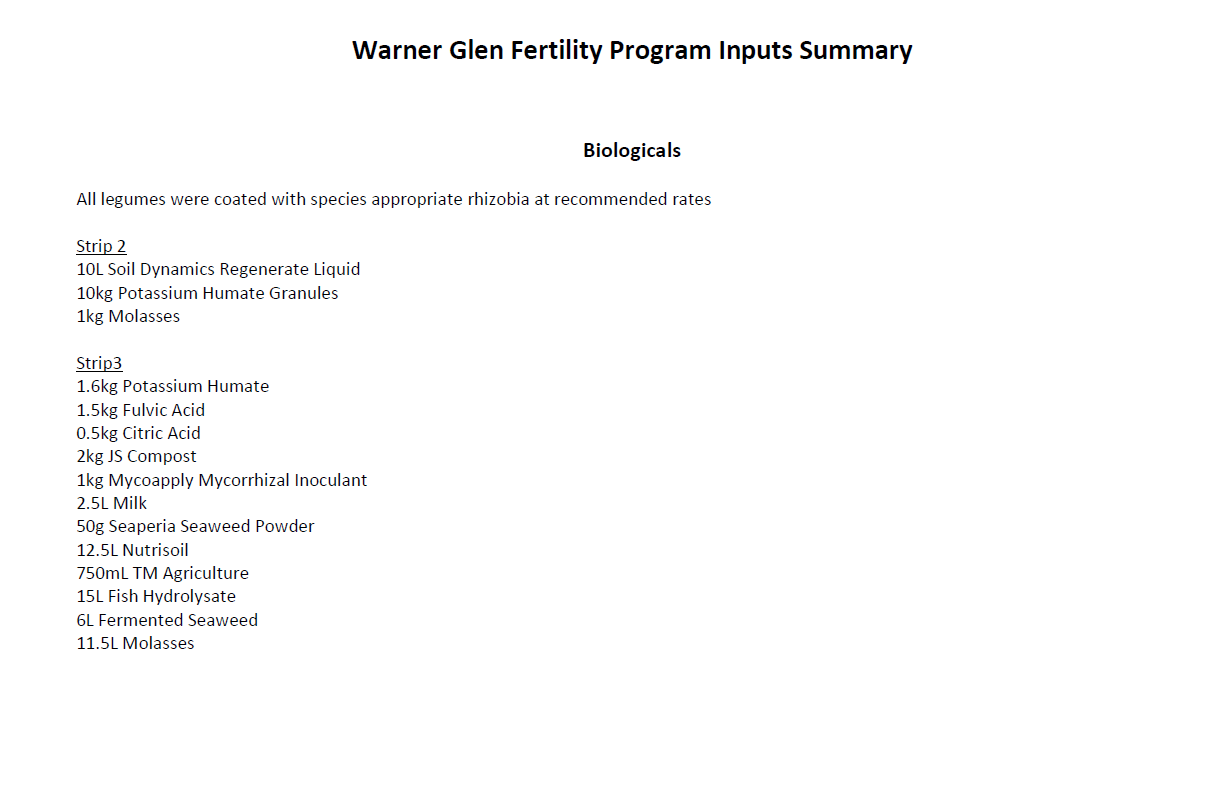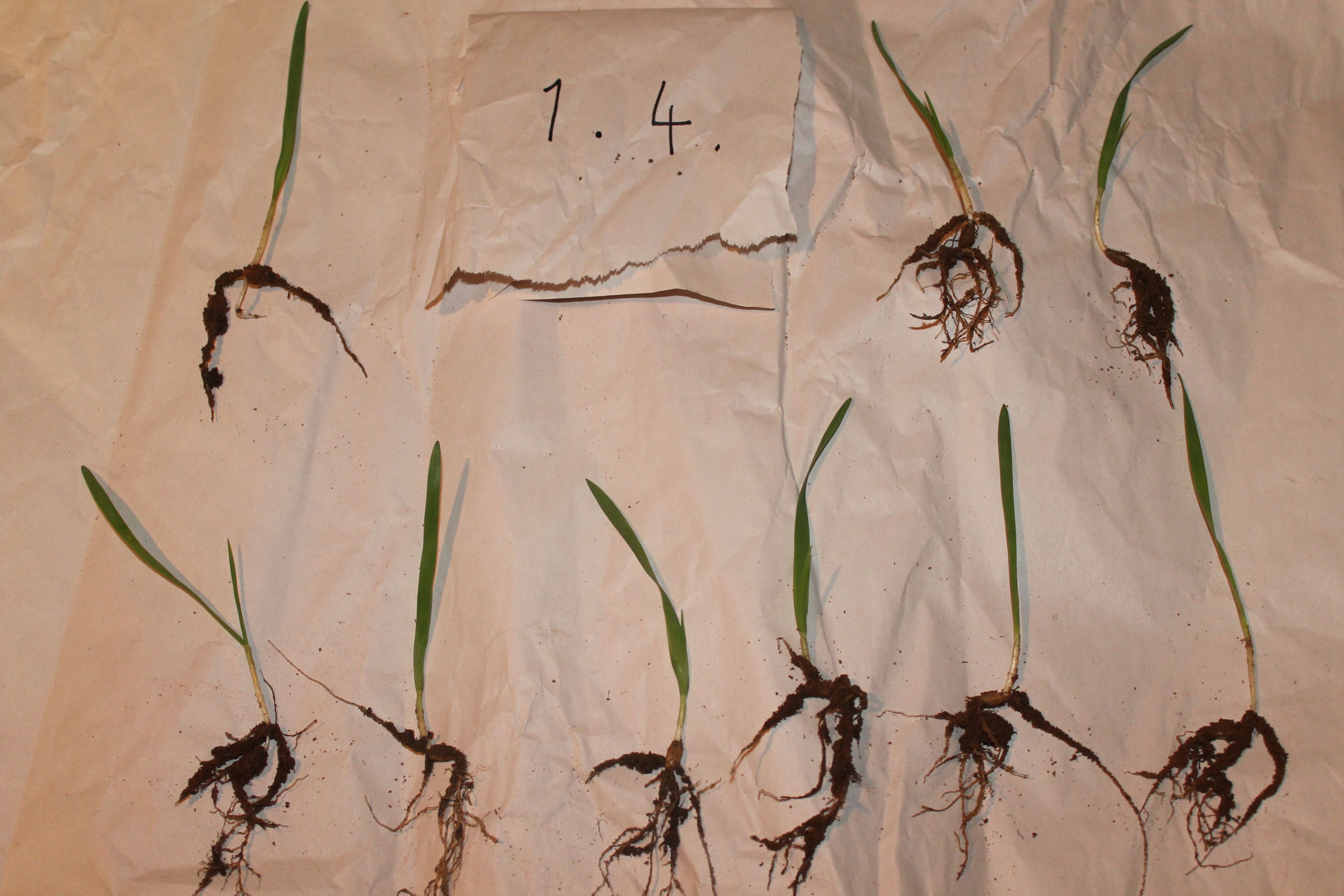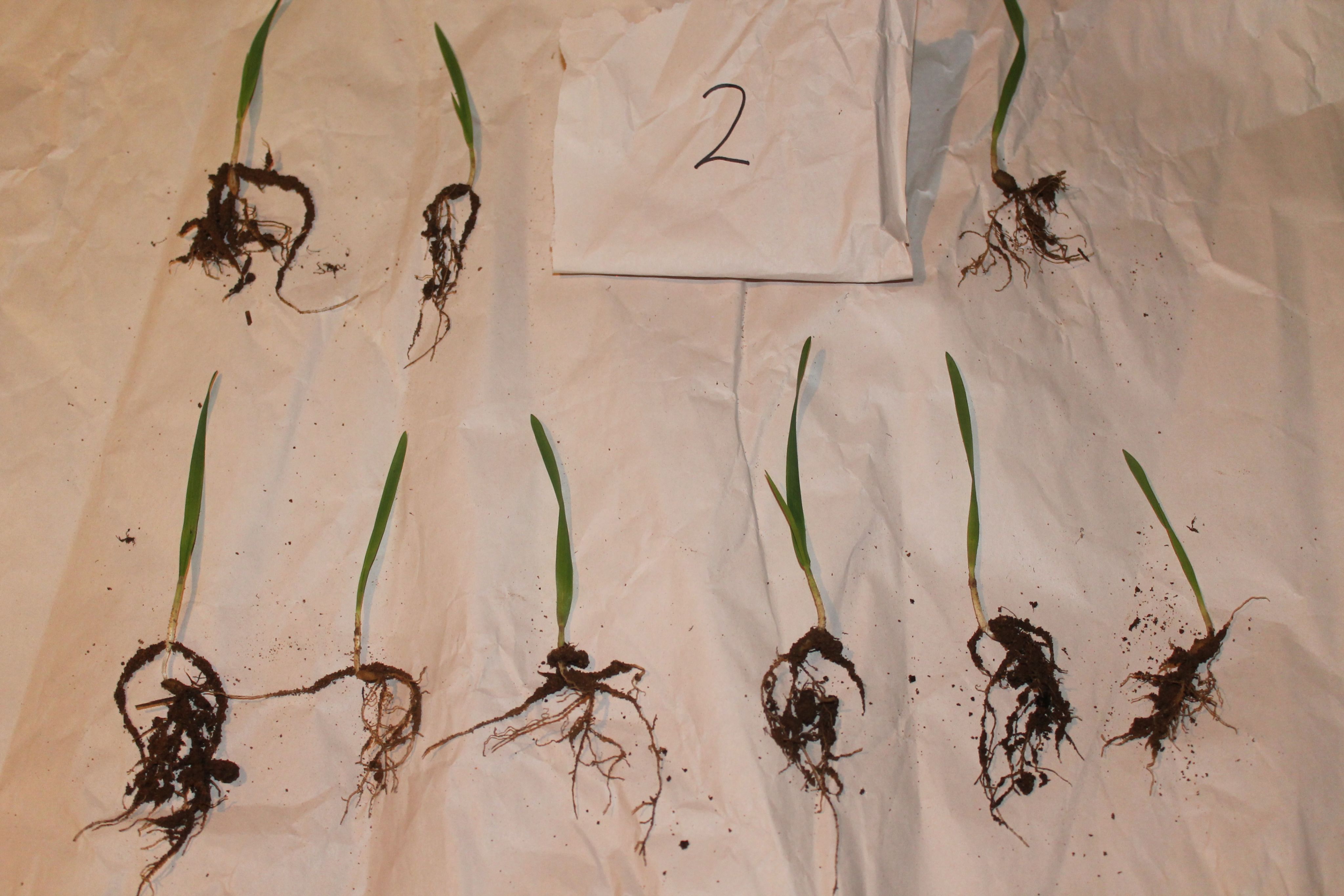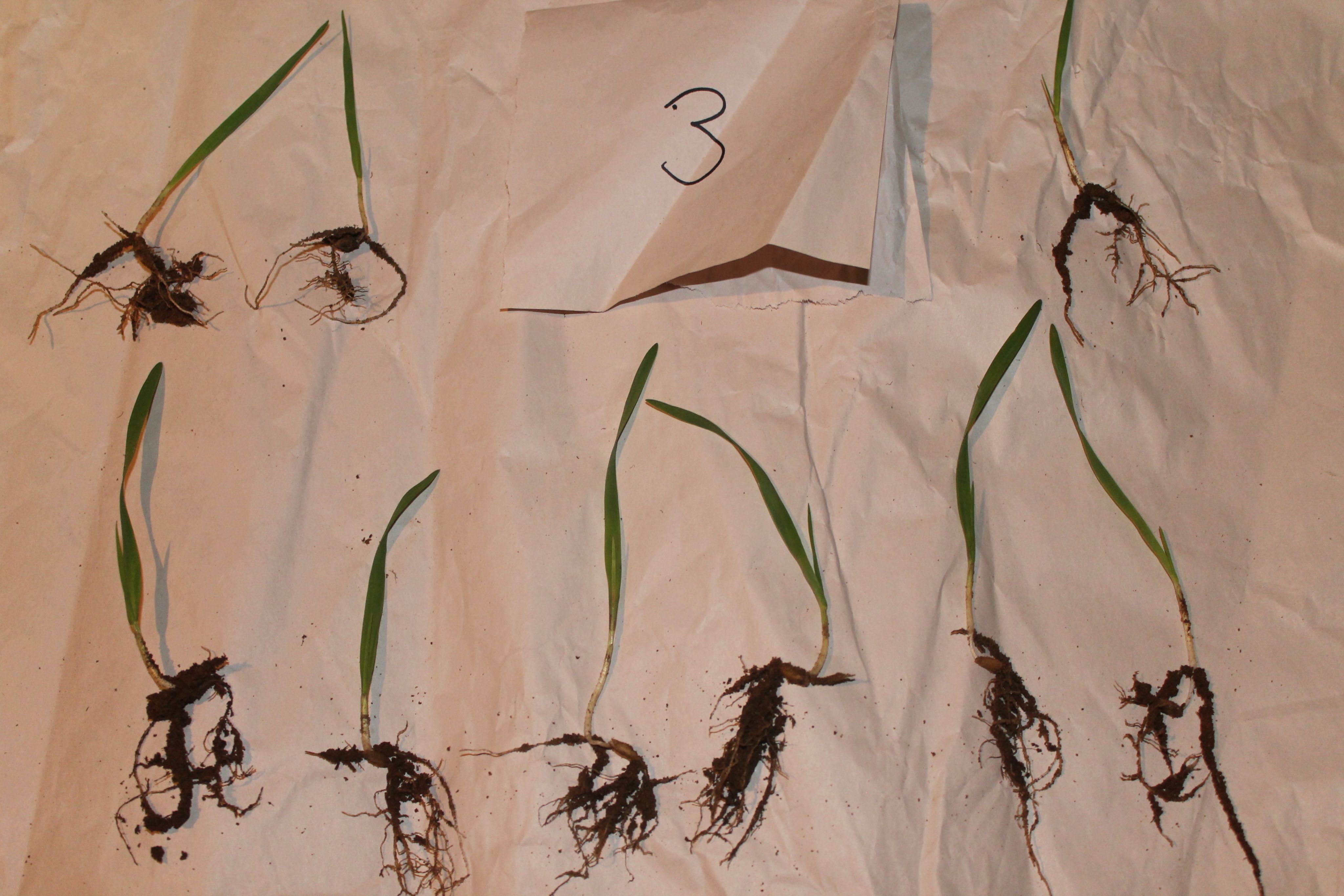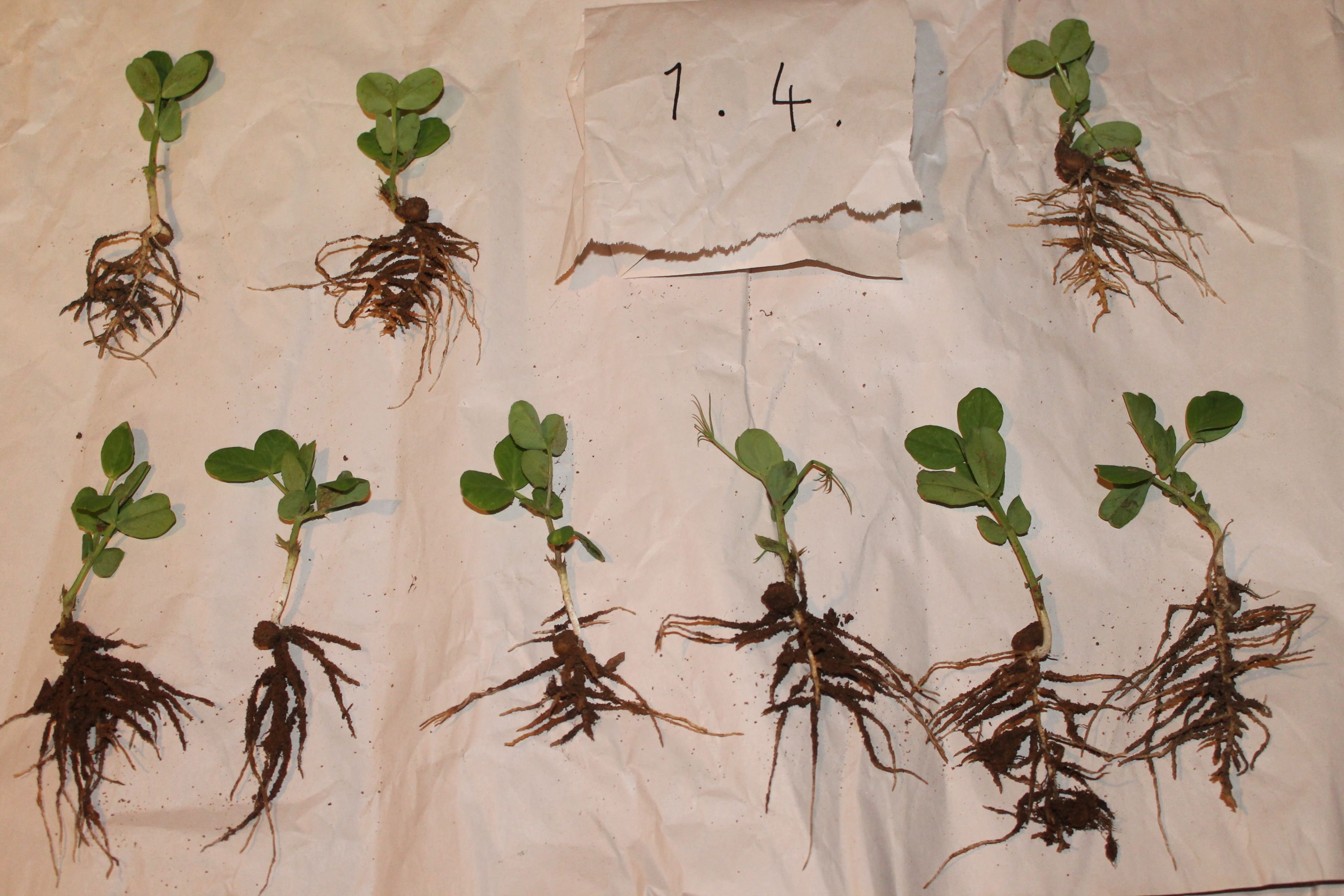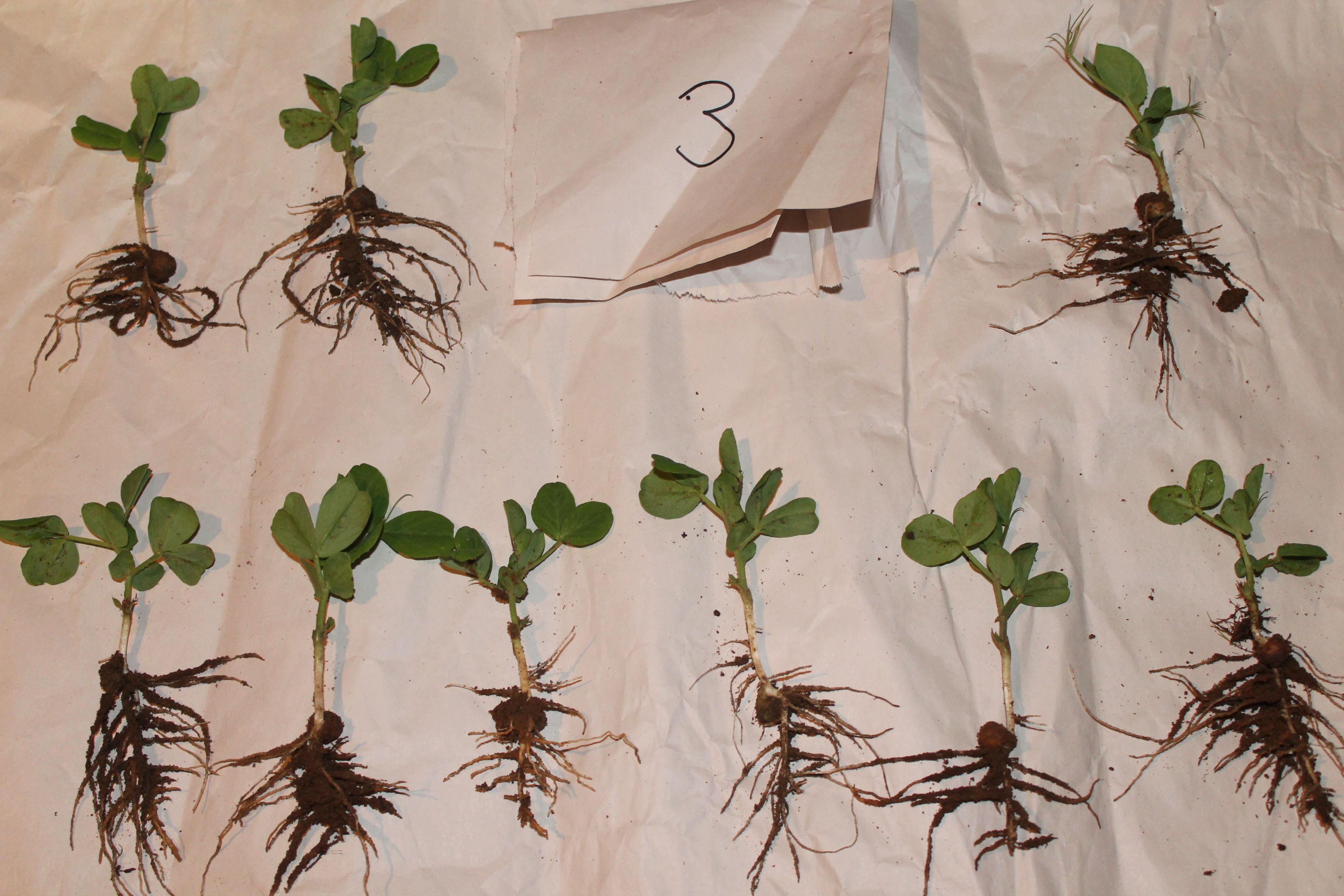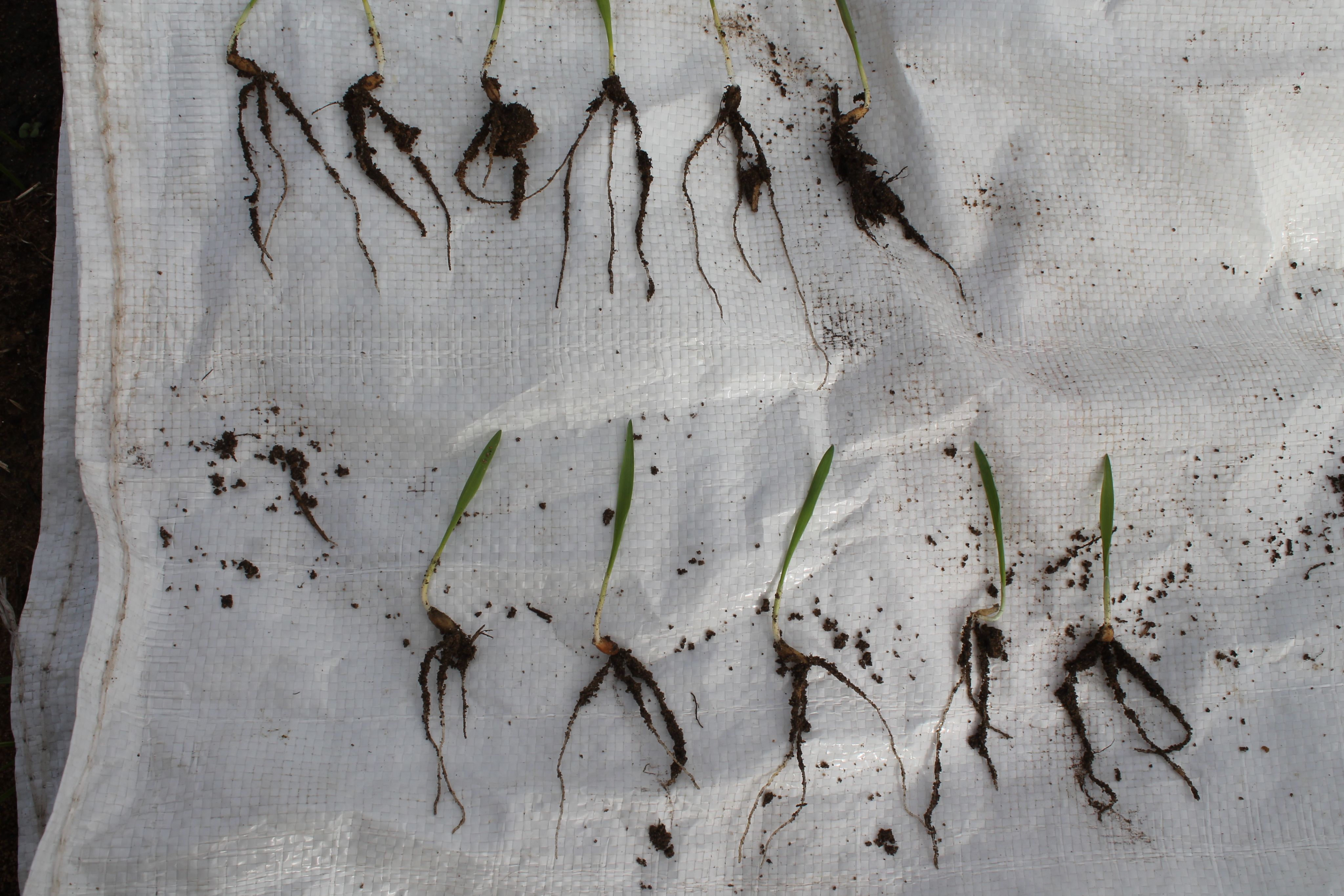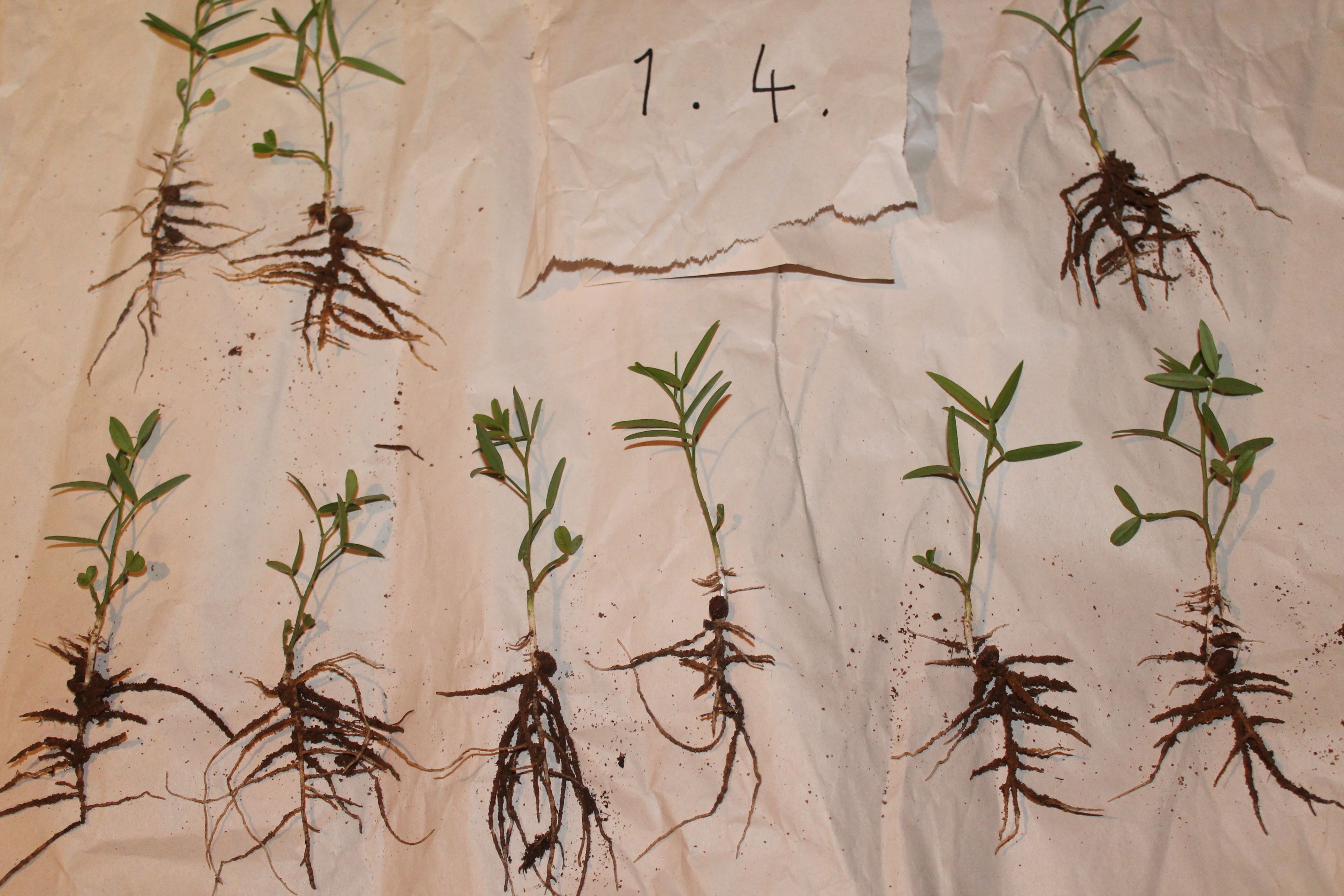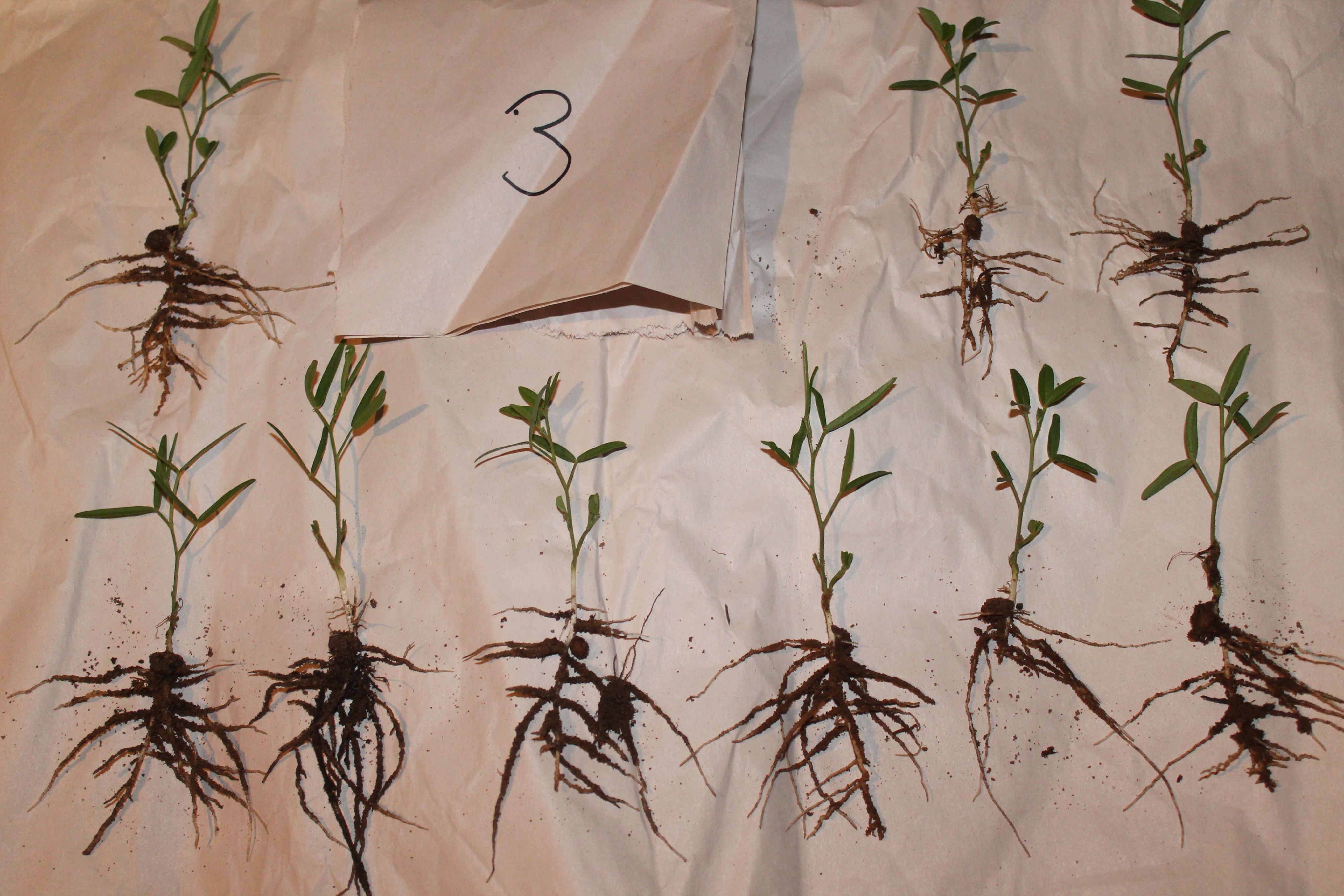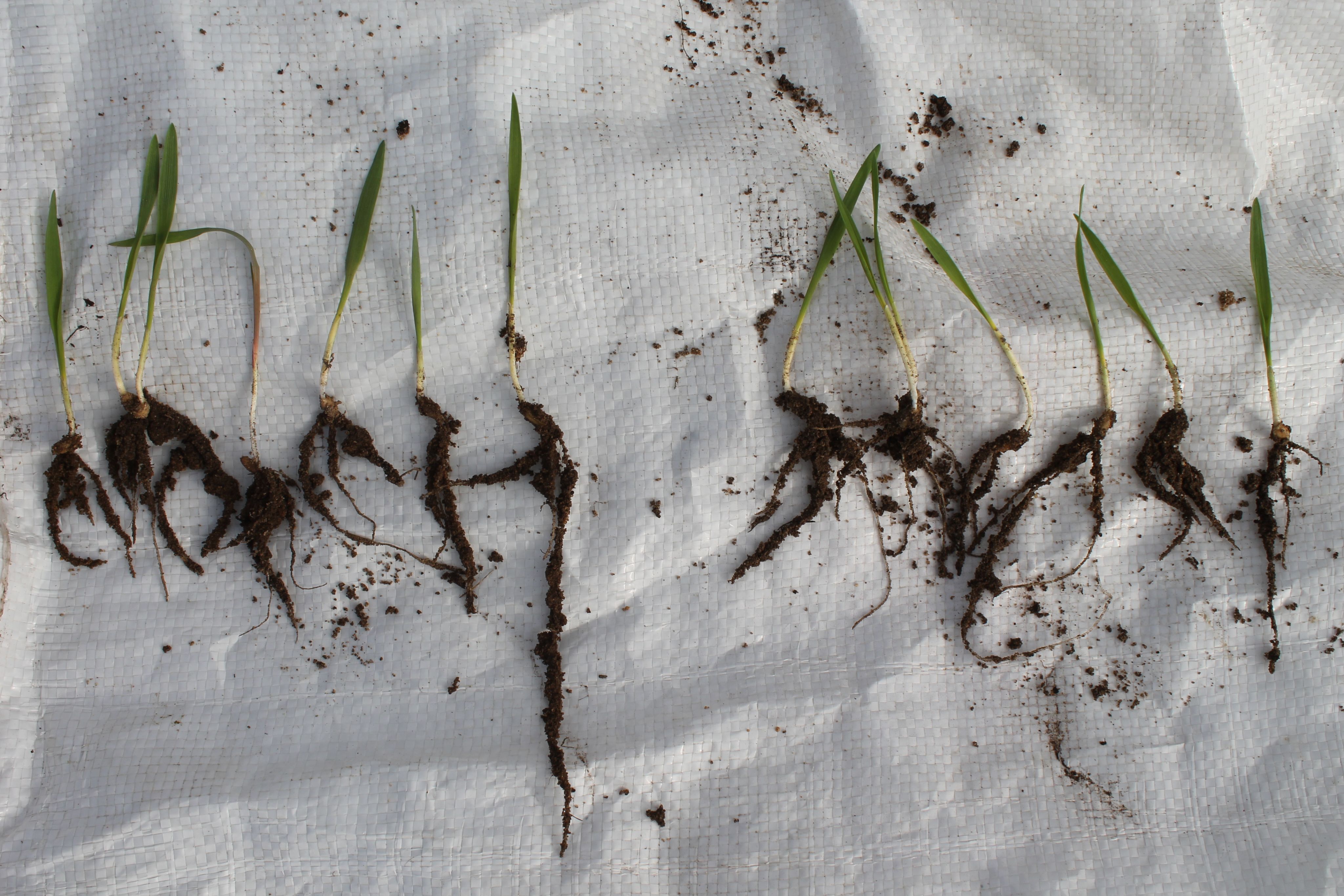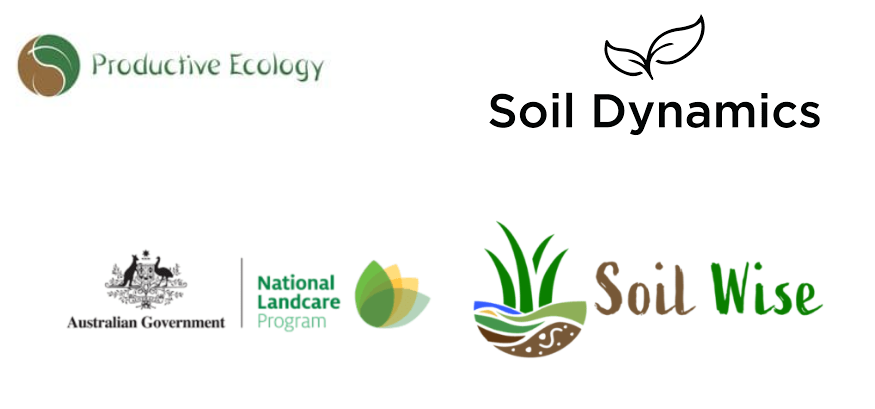Demonstrating the Difference
An investigation of the economic and environmental merit of various approaches to fertility in primary production enterprises.
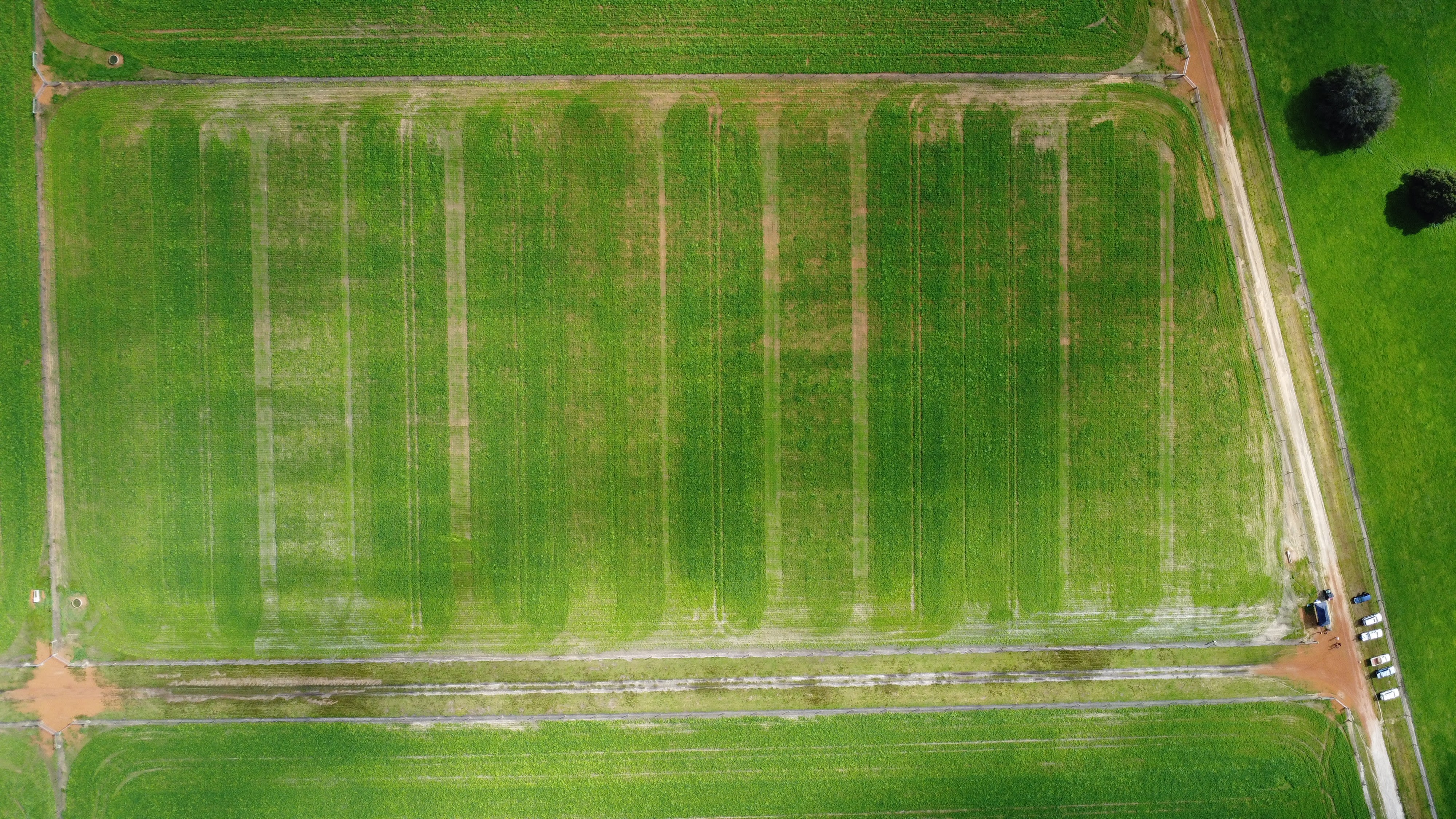
Project Overview
When setting up this demo, we wanted to look at and/or test some of the things local farmers are trying in this space and would like to gain a better understanding of.
These included:
- The strategic use of multispecies cover crops in grazing operations?
- Nitrogen supply and application for optimal efficiency?
- The viability and effectiveness of organic and mineral based fertilisers?
- Different types of soil tests?
- Different types of plant testing?
- Evaluating and designing foliar nutrient application programs
- The use of bio-stimulants
- Biological seed/planting treatments?
The Method
Step 1. Twelve 25m wide strips were marked out in a paddock, of which 3 random strips were allocated to each fertility program. Soil tests were carried out to inform fertiliser requirements.
Step 2. To deal with a major Doublegee problem the paddocks whole site was moldboard ploughed, limed and power harrowed before seeding.
Site Preparation
Site Preparation
Step 3. A cover crop mix was sown across all the program strips. Different fertility treatments including seed coatings, planting furrow liquids, broadcast fertilisers and foliar treatments were applied to the different programs (see details below). The control program didn’t get any inputs other than the lime.
- Program 1 was based on DPIRD fertiliser calculations and agronomist recommendations. It involved pH adjustment and seasonal NPK and S applications with granulated fertilisers as informed by soil and plant testing.
- Program 2 also followed agronomist recommendations and was based on the balancing of soil base saturation percentages and the application of organic fertilisers as determined by soil tests, as well as treatments with bio-stimulants.
- Program 3 followed agroecological recommendations and involved a range of strategies to try and improve nutrient use efficiency including pH adjustment, biological and nutritional planting furrow treatments, combining fertilisers with carbon sources and/or bio-stimulants, and the application of foliar nutrient sprays, informed by soil and plant tests.
Step 4. Plant tests from the different programs were carried out during the season to determine nutritional status and photos from all the plots were taken at different stages of growth.
Step 5. A cross section of the plots was grazed midway through the season to see what impact this had on the stand. The whole site was grazed at the end of the season after most species had set seed.
Step 6. Dry matter and feed analysis data was collected from all the plots towards the end of the season.
Demonstrating the Difference Fertility Program Diary
Seeding Strips
Seeding Strips
Taking Cuts from a Cover Crop
Mowing the strips
Mowing the strips
Bailing
Bailing
Weighing the bales
Weighing the bales
Taking the cores
Taking the cores
Demonstration strips by drone over time:
02/07/24
02/07/24
14/08/24
14/08/24
25/09/24
25/09/24
08/01/25
08/01/25
Are Multispecies Cover Crops Useful in Grazing Enterprises?
Multispecies cover crops are grown and used for various reasons but the main principle behind plant diversity is that it supports greater microbial and animal diversity above and below ground. In theory this leads to the recruitment of a broader range of genetics to carry out important soil regulation and nutrient cycling processes, among other things, such as plant growth promotion and immunity.
More specifically, multispecies cover crops have the capacity to:
- grow with less fertiliser
- provide quality forage to fill feed gaps (standing summer feed and early autumn growth)
- promote greater animal health and welfare
- build soil at speed and depth
- suppress/outcompete problem weeds
- support biodiversity on the farm
There are also numerous considerations around:
- what species are best suited for the desired purpose i.e. feed value
- the seasonal suitability of species in a mix
- maturity times of the different species
- how much diversity is needed to be effective
- meeting the requirements of a range of different species in a mix
- the ability of the different species to withstand grazing
- their value as hay or standing hay for summer feed
- what different species can provide in terms of early autumn feed
- seed costs
- planting/establishment practicalities
Discussion Points
The cover crops grew better with a fertiliser program but the non-fertilised control still produced 7515kg/Ha of dry matter. This could be attributed to the mineralisation of organic matter from the tillage prior to seeding and it will be interesting to see how these areas perform next season.
Most of the species in the mix grew fairly well but slower growing and smaller species were somewhat disadvantaged.
The un-grazed cover crop produced decent quality spring/summer standing feed.
We will be looking to see what sort of early feed the cover crop that has been left to set seed produces in the next season.
All indications were that the animal health when grazing on the cover crop was good but no testing was carried out on weight gains and other parameters.
Some of the species like the cereal rye and daikon matured faster than others which was less ideal for timing of graze events. For grazing purposes, it is best to stick to awnless cereals if you are going to let them go to the reproductive stage.
A cross section of the plots was grazed earlier in the season to see what effect that would have on persistence, comeback and seed set of species. This will be further assessed with the species composition in early grazed and not grazed areas next season. All plots were subsequently grazed in late spring but it is assumed lots of the seed fell out or was knocked to the ground.
Soil health characteristics need to be tested over a number of seasons to evaluate the effect of multispecies cover cropped areas and grazing regimes against standard ryegrass/clover pasture management.
The cover crop stands seemed to outcompete certain weeds (doublegee and capeweed) and not others (wild radish). The number of different species in a multispecies stand limits the option to use selective herbicides.
The cost of seeding was approximately $100/Ha more than what it would cost to seed a ryegrass, clover and oats type pasture mix.
The requirements for the successful establishment of a weed free multispecies cover crop stand is similar to those of a standard cash crop in terms of pre-planting weed control and soil preparation.
Happy Cows!
Happy Cows!
Additional Reading:
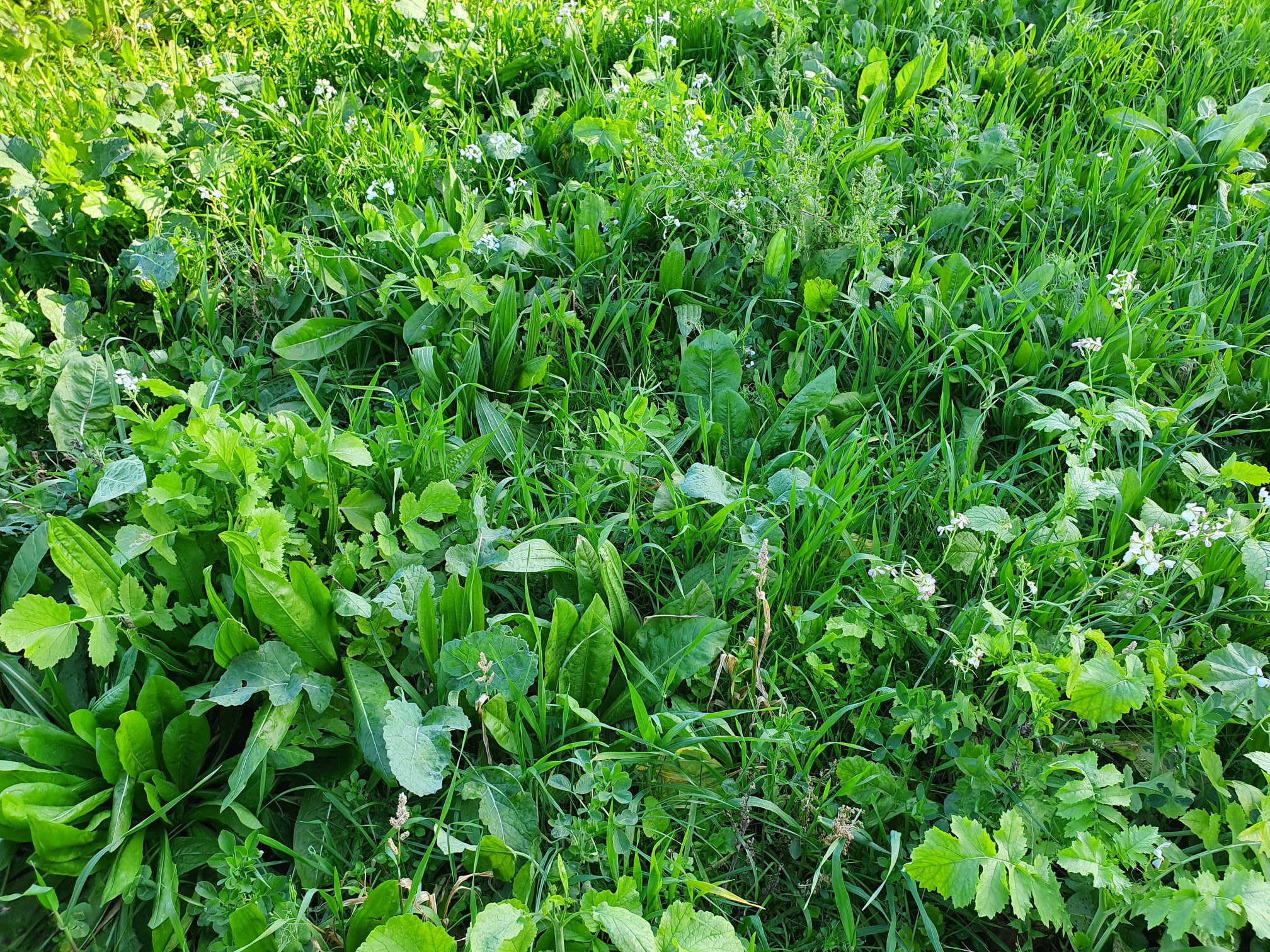
Nitrogen Supply and Application Program Optimisation
An adequate supply of nitrogen throughout the season is paramount for good plant growth.
There are a number of factors to consider when trying to develop a good nitrogen program for the season including:
- determining the amount of nitrogen in the soil organic matter and the rate of soil nitrogen release at different stages in the season or under different conditions
- the nitrogen requirements of the crop you are growing
- the cost of different nitrogen sources
- suitability of the nitrogen source for the soil
- suitability of the nitrogen source for the crop type and/or stage of growth
- the release curve of different sources of nitrogen
- leaching or volatilisation risks associated with your nitrogen program
- accounting of nitrogen fixation
- the plant metabolic cost involved with the uptake and conversion of different forms of nitrogen into amino acids/protein
- the supply of nutrient cofactors that are important for enzymes involved in amino acid/protein synthesis
- the supply of other nutrients such as sulphur and molybdenum that needed for the assembly of certain amino acid/protein molecules
Growers have to make informed decision around testing to determine soil nitrogen supply, the type/s of nitrogen you apply, the method, placement and timing of applications and ensuring an adequate supply of other nutrients that are needed for efficient amino acid/protein synthesis.
Discussion Points
The timing and application of nitrogen in this project seemed to be the most influential factor in terms of dry matter production.
The growth difference under different nitrogen regimes didn’t start to show until around 4-5 weeks after germination, indicating that putting nitrogen out too early may not be very economical.
The tissue tests indicated that plant nitrogen levels dropped off if the initial supply wasn’t maintained and consistent application was important to match the growth of extra biomass generated by prior application.
The organic forms of nitrogen available on the market are low analysis and cost significantly more per unit. The release curves of many organic nitrogen fertilisers are not clear.
It is difficult to determine if or how much combining nitrogen fertilisers with humic substances and bio-stimulants improves stabilisation/retention/uptake.
Is the foliar application of nitrogen a viable way to improve NUE and reduce nitrogen inputs?
Will the amount of soil nitrogen required next season increase (removal from grazing) or decrease (higher levels of organic matter/nitrogen fixation)?
Additional Resources:
In this episode of Talkin’ After Hours Jo & Kate chat to Joel Williams on the hot topic of Nitrogen – how it works in the nutrient cycle and how can we best optimise its use – particularly in grazing systems. The podcast summarises much of the information presented in our earlier webinar with Joel on the same topic. Tune into the full podcast here: https://lowerblackwood.libsyn.com/talkin-nitrogen-with-joel-williams
In this important and topical webinar, agroecologist Joel Williams of Integrated Soils will introduce participants to the fundamentals of how nitrogen works in the nutrient cycle and what steps farmers can take to reduce their reliance on inorganic nitrogen through good nitrogen management for more resilient and profitable grazing systems.
Strip Trials Layout
Strip Trials Layout
Strips as at 14 July 2024
Strips as at 14 July 2024
Strips as at 26 July 2024
Strips as at 26 July 2024
Assessing growth across the strips
Assessing growth across the strips
Feed Test & Leaf Analysis Results:
Plate meter reads for Sept 2024
Summation of Round Bale Feed Data
Haddon trial 2024 Oct - pasture & green chop full results
Program Input Costs
Haddon Demo Round Bale Cuts with Feed Test
Fertility Programs Inputs Summary
The Viability and Effectiveness of Organic and Mineral Based Fertilisers
The use of organic materials to increase fertility is a practice that can make use of organic waste products, essentially cycling nutrients that would otherwise be lost, back into our production systems. The organic materials, by nature, contain carbon, proteins and other biochemical compounds that generally support soil biological activity, which can have flow on effects in terms of plant growth.
However, fertilisers that are of organic origin may need to be sanitised and processed to get them into a suitable form for application. Because of this, organic fertilisers are often significantly more expensive than non-organic fertilisers, per unit of nutrient. Greater volumes of organic fertilisers are often needed which has implications in terms of storage and transport costs. The release curve of the inherent nutrients is also less understood and while slow release can be a good thing, more immediate nutrient availability is often required.
The release of key nutrients from mineral fertilisers such as lime, dolomite, rock phosphate, basalt etc… can take a number of seasons so they are better for long term soil remediation than seasonal crop nutrient supply. Bulk mined mineral fertilisers can be a cost-effective source of nutrients that are needed in large quantities if there is source nearby. The purchase and addition of more expensive mineral products is likely to be a costly exercise that offers little in terms of crop response and raising total soil levels.
Discussion Points
There were issues associated with broadcasting powdered organic fertilisers such as blood and bone and feather meal. The pelletised organic fertilisers were reasonably easy to apply.
We were unable to find any cost-effective organic nitrogen sources and it was hard to predict the release curve of the organic nitrogen fertilisers we used. The Basebuilder K product used on treatment 3 was relatively well priced but again, the release curve was an unknown.
There was no notable growth response or indication of increased nutrient supply in plant sap from the mineral fertilisers that were applied in the different treatment programs this season.
Additional Resources:
In this webinar on Fertile & Functional Biological Systems, Mark Tupman from Productive Ecology explores the biological principles we can follow and practices we can adopt to make best use of our natural resources in primary production enterprises.
Tune in to the full podcast https://lowerblackwood.libsyn.com/talkin-soil-function-fertility-with-mark-tupman
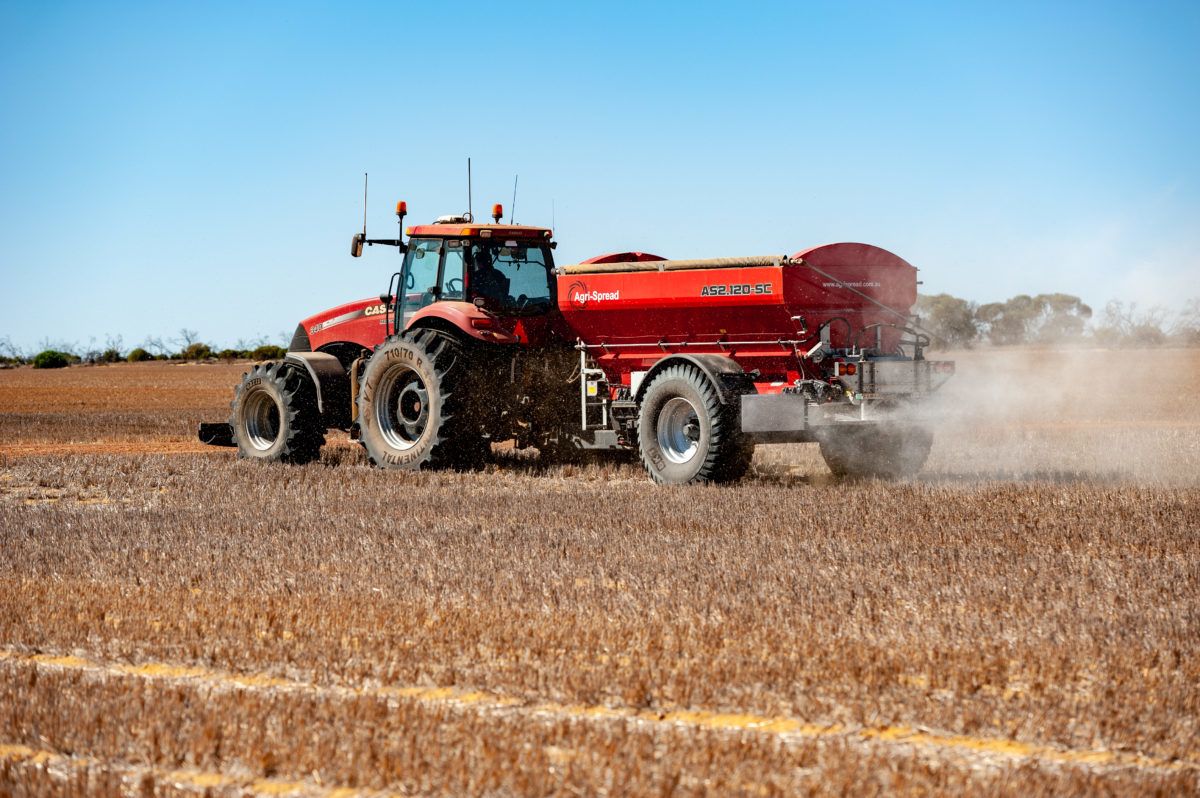
Different Types of Soil Tests
At any one time, there are pools of nutrients held in different soil fractions:
- dissolved in the soil solution
- held on exchangeable sites
- within soil organisms
- within organic materials
- the soil mineral matrix
These pools of nutrients are in a state of flux. Nutrients are constantly being removed from the soil solution and exchange sites by plants, released from organic matter, liberated from the soil mineral matrix by soil microbes, and so on. Variables such as soil moisture, temperature, cation exchange capacity (CEC), phosphorous buffering index (PBI), acidity/alkalinity (pH) redox state (Eh) and soil carbon levels also significantly influence the state and place nutrients occupy in the soil and their plant availability.
Soil testing methodologies are designed to identify significant soil characteristics and the levels of essential nutrients in the different soil fractions. These are then interpreted in relation to plant nutrient availability.
There are a number of ASPAC certified laboratories that offer test packages that cover a range of different parameters and some that also offer non-accredited soil tests. There isn’t as yet reliable data on the reliability and usefulness of some of these testing parameters/methods and the protocols around interpretation and reference levels.
Tests being used by farmers in Australia to determine nutrient status and availability include:
- Available Soil Nutrient Test
- Total Nutrient Soil Tests
- The Haney Soil Test
We carried out different types of soil tests on a composite 10-20cm sample of soil from the site to compare the results and recommendations. These included:
- a comprehensive soil test done with CSBP laboratory. The numbers were entered on the nutrient calculator to determine nutrient status
- an available nutrient soil test with SWEP laboratory that included base saturation percentages and nutrient recommendations
- a Haney soil analysis report through EAL laboratory that used alternative extraction methods to determine available carbon, nitrogen and other nutrient elements as well as a solvita microbial respiration reading.
- Total soil nutrient tests were sent to SWEP and EAL laboratories to see if they were consistent.
Discussion Points
The NPK and S and pH readings and general recommendations generated by all the tests were roughly the same. The organic matter/carbon readings were a little inconsistent.
Soil tests are not generally recommended as a reliable indicator of the supply of certain trace elements.
There was some inconsistency between the EAL and SWEP total nutrient levels.
The Haney and SWEP tests are more expensive.
The worth and value of all these different tests was hard to qualify in this project.
The phosphorus buffer index (PBI) map of Western Australia, grouped according to the national PBI categories, highlights locations of soils with PBI's above 70. These are marked in orange (10% of total samples) and red colors (5% of total samples) and can be described as mainly gravelly forest soils.
The phosphorus buffer index (PBI) map of Western Australia, grouped according to the national PBI categories, highlights locations of soils with PBI's above 70. These are marked in orange (10% of total samples) and red colors (5% of total samples) and can be described as mainly gravelly forest soils.
Additional Resources:
Plant Testing
The optimal concentration range for the different nutrients within plants varies with species, parts, stages of growth and growing conditions. The balance between different nutrients and their interactions within plants also has a bearing on growth.
Nutrients are primarily translocated from roots to the rest of the plant. Along the way they may be deposited in roots, stems, leaves and fruit or transferred to phloem sap. Some nutrient elements or molecules are more phloem mobile than others and can be readily partitioned to different plant parts as needed.
A range of plant testing methodologies are offered by laboratories to identify the levels of nutrients and other characteristics such as sugar content, pH and electrical conductivity in different plant plants. Of these Leaf Tissue Testing is well established and industry accredited.
- Leaf Tissue Testing
- Plant Sap Analysis
- Sap Analysis
There are also a range of handheld meters that can be used in the field to record certain plant sap parameters. These include:
- Refractometers
- Horiba LAQUAtwin Meters
These meters were not designed specifically for plant testing and established protocols and reference levels for different plant parts, species, stages of growth aren’t readily available. However, with some understanding of the parameters you’re testing, they can still be used to track certain parameters over time and carry out side by side comparisons.
Discussion Points
We carried out a simultaneous leaf tissue (CSBP) and leaf sap (Nova Crop Control) tests on oats (treatments 1-4) and clover so that we could cross reference the results obtained with these different methodologies.
Early sap samples taken on the young growth showed elevated levels of nitrogen as the reference levels are not calibrated to different stages of growth. A more accurate picture of nitrogen supply was evident in the differential (young and older leaf) results collected a bit later in the season. Regular sap tests were used to inform fertility program 3 through the season but were not a reliable indicator of nitrogen status early in the season.
Based on the sap results, potassium was applied at higher rates in this program but there was no obvious benefit for the extra potassium applied and the levels didn’t go up much in subsequent tests. The sap tests consistently indicated that there was a manganese and boron supply shortage and a calcium and phosphorous shortage early in the season.
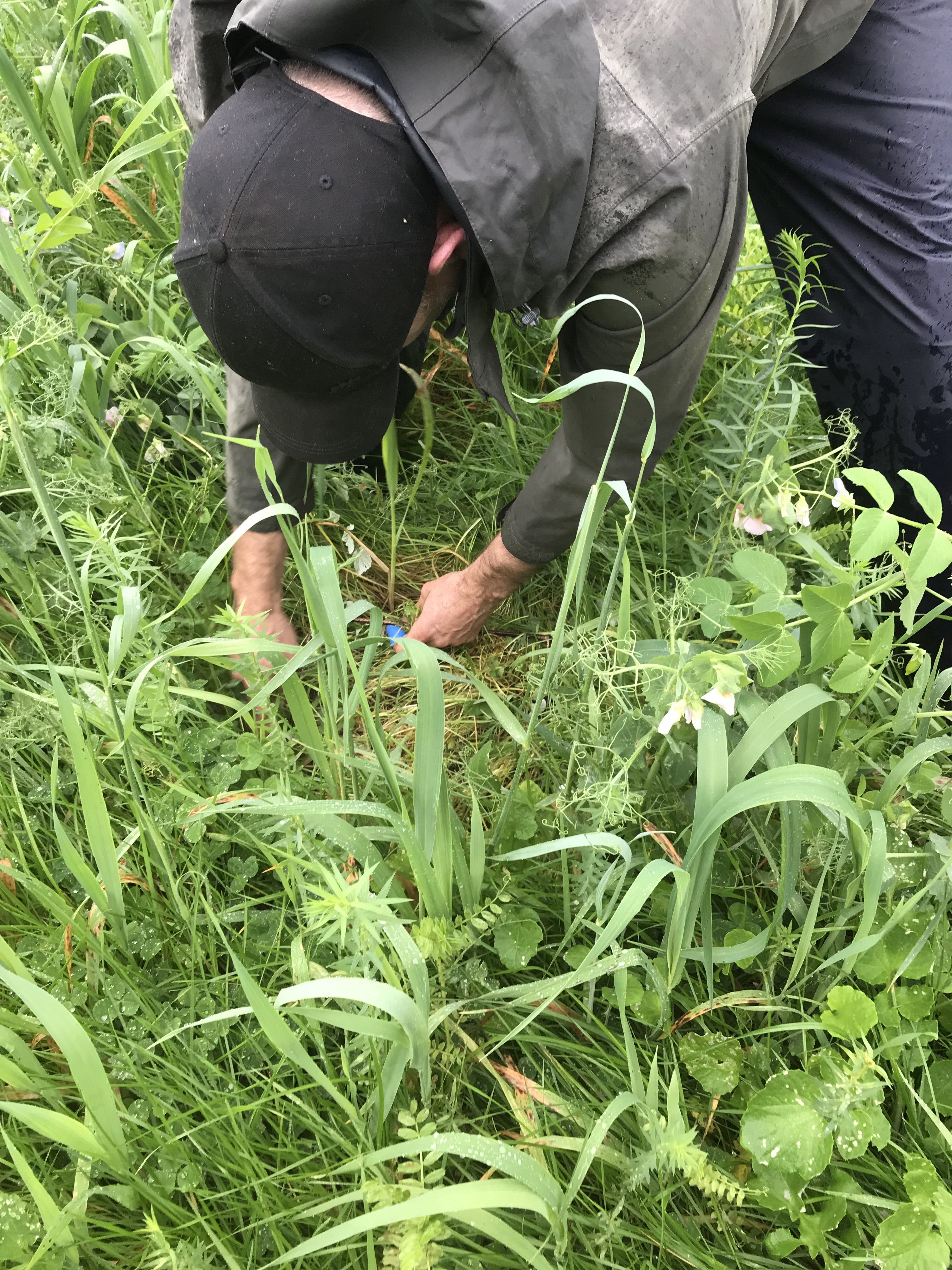
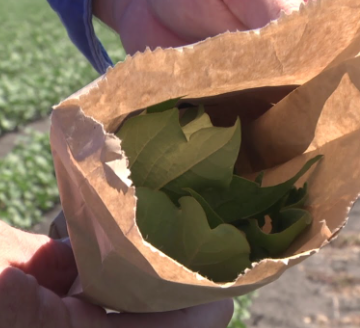
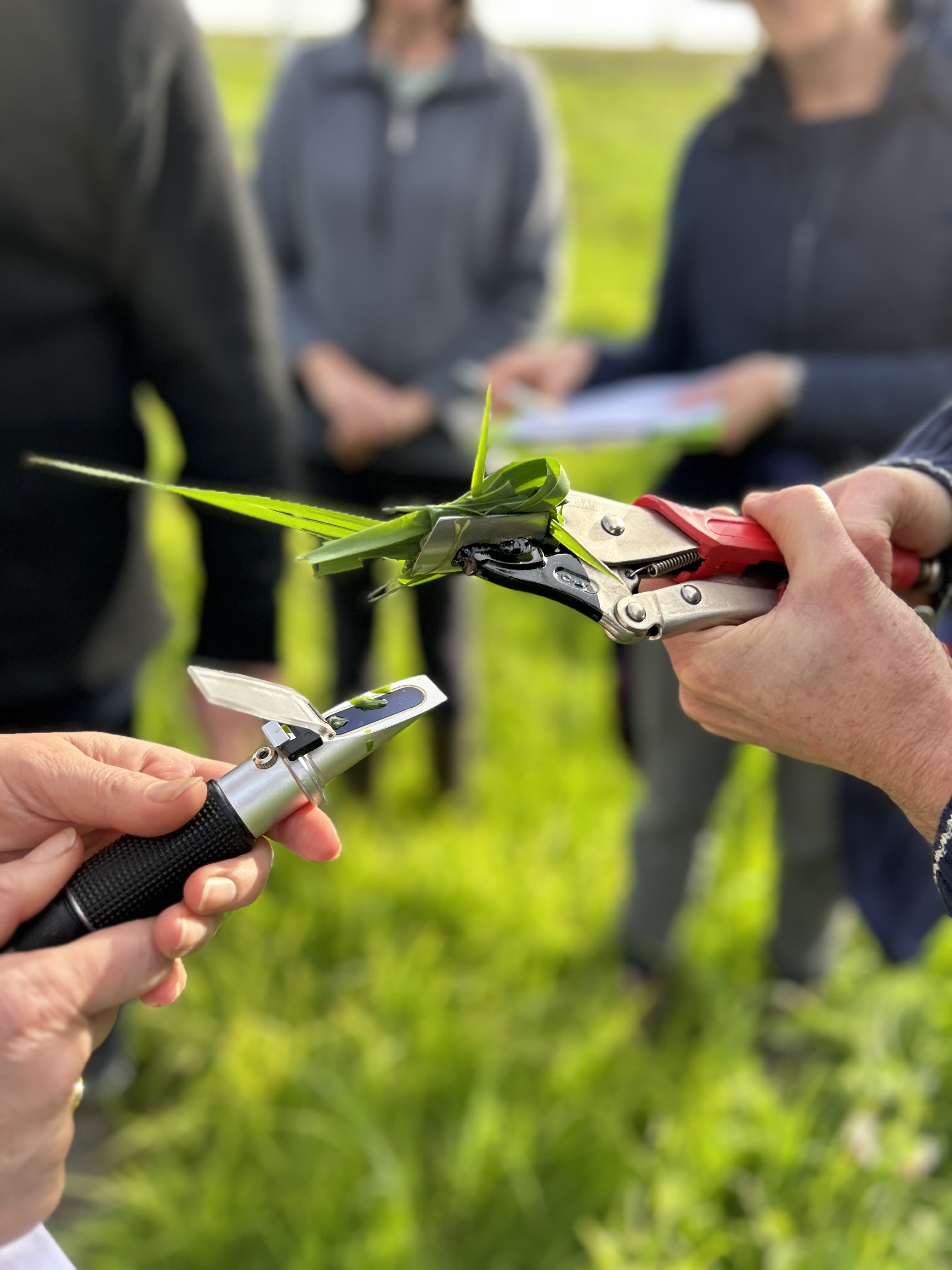
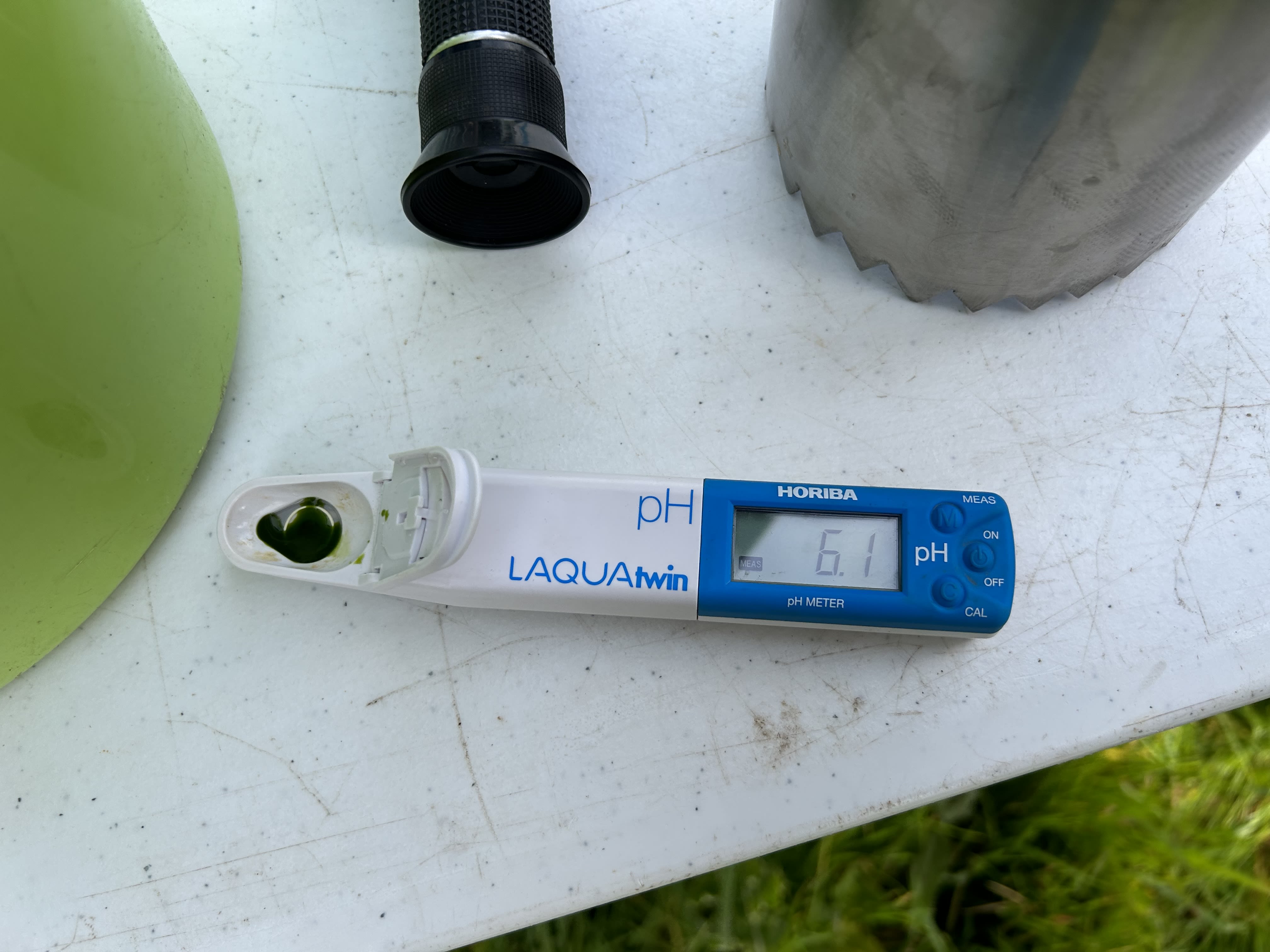
Plant Test Results
Weighing the leaf samples
Weighing the leaf samples
Dried Hand Cuts
Dried Hand Cuts
Leaf Tissue Test September 2024
Sap Sample: Strip 1 Oats 03/07/24
Sap Sample: Strip 2 Oats (High N) 03/07/24
Sap Sample: Strip 3 Oats 03/07/24
Sap Sample: Strip 4 Oats 03/07/24
Sap Sample: Strip 1 Peas 03/07/24
Sap Sample: Strip 2 Peas (High N) 03/07/24
Sap Sample: Strip 3 Peas 03/07/24
Sap Sample: Strip 4 Peas 03/07/24
Sap Sample: Strip 3 Peas 27/07/24
Sap Sample: Strip 3 Oats 27/07/24
Sap Sample: Strip 3 Peas 28/08/24
Sap Sample: Strip 3 Oats 28/08/24
Sap Sample: Strip 1 Oats 24/09/24
Sap Sample: Strip 2 Oats (High N) 24/09/24
Sap Sample: Strip 3 Oats 24/09/24
Sap Sample: Strip 4 Oats 24/09/24
Evaluating and Designing Foliar Nutrient Application Programs
The application of foliar applied nutrients is a practice that warrants consideration for a number of reasons.
|
Pros |
Cons |
|---|---|
|
Can be used to get nutrients into the plant when soil delivery is compromised by adverse conditions |
Have be applied more regularly |
|
Offers efficient uptake of applied nutrients, so significantly lower quantities are needed |
Can only supply a portion of required macro nutrients |
|
A way of getting soluble nutrients into plants without compromising soil biology. |
Logistical challenges getting them out |
|
Foliar applied nutrients are taken up rapidly so can be used to immediately address plant nutrient shortages, especially in leaves |
|
|
Is an effective way of getting micronutrients into plants |
The correct formulation and application of foliar nutrient sprays is also important for it to be effective. Factors such as nutrient solubility, compatibility, water quality, pH, chelation/complexing, mixing, application rates and method, weather conditions etc., all need to be understood.
As such, while applying nutrients via foliar sprays offers numerous benefits, it may be logistically and practically challenging. Needless to say, if one is to adopt the practice of foliar nutrient application, it takes commitment and needs to be done correctly, efficiently and consistently and it may be a viable strategy in some situations and not others.
Discussion Points
Several applications of foliar nutrients were applied along with suitable organic biostimulant/chelating/complexing agents, and a spreader/sticker/surfactant to the treatment 3 plots. Treatment 4 plots got a one-off application of foliar manganese.
Aside from a visual response to an early application of foliar urea, it was hard to see any obvious differences in plant growth from these applications. There was however, an increase in the levels of trace elements applied on both the sap and tissue tests. There were too many other variables involved to ascertain the effectiveness the foliar nutrient applications carried out this season.
Foliar spraying the strips
Foliar spraying the strips
Boomless Nozzle Sprayer
Boomless Nozzle Sprayer
Mixing up a Trace Element Mix
Mixing up a Trace Element Mix
Acidic Liquid Trace Mix
Additional Resources:
Tune in to the full podcast here: https://lowerblackwood.libsyn.com/leveraging-foliar-nutrition-to-boost-fertility-with-mark-tupman
Presented by Mark Tupman from Productive Ecology, this webinar explores how the application of nutrients to the foliage of plants can be an effective way to improve crop/pasture nutritional status, and as a consequence reduce the volume and costs of some inputs whilst at the same time contribute to improved soil health.
The Use of Biostimulants
There are an increasing range of inputs, being used in primary production to improve plant growth outcomes, that do not fall into the established categories used to classify common agricultural or horticultural products. These have been broadly termed biostimulants.
While various definitions for biostimulants have been proposed, and there are many products that are widely referred as biostimulants, it is worth noting that at this time there isn’t a regulatory framework or legal definition for biostimulants.
Put simply, a biostimulant could be any agent, that increases the activity or efficiency of living things.
When we talk of agricultural/horticultural biostimulants, it is in relation to their application to enhance plant nutrition, abiotic stress tolerance and/or crop quality traits, excluding products that are already classified as fertilisers, pesticides, and soil amendments.
While there is more work to be done on the different components, modes of action and efficacy of biostimulants, the use of biostimulants may offer certain benefits in primary production systems, and some growers are choosing to utilise a range of such products in their programs.
Commercially available biostimulants include:
- Humic substances such as potassium humate and fluvic acid
- Protein hydrolysates made from animal products such as fish waste.
- Seaweed extracts and other plant botanicals
- Chitin and chitosan derivatives
- Non-essential chemical elements such as silica
- Molasses, milk and other food sources
- Beneficial microbiological cultures
Commonly available products or homemade biostimulants such as compost/vermicast, molasses, milk, bioferments and other biopreperations, plant extracts etc., are also an option.
Biostimulant formulations may contain one (i.e. seaweed extract), or a combination of these constituents ( i.e. compost/vermiculture).
Biostimulants are designed to stimulate biology. As such, when applying biostimulants it is important to consider what biology we are attempting to stimulate, plus why and how. Also its important to understand that results will depend on context.
Discussion Points
A range of biostimulants were applied to treatment 3 plots and the treatment 2 plots received two applications of a locally produced biostimulant product. Some of these were applied with planting treatments and some were applied with granulated fertiliser and liquid foliar sprays.
The inclusion of biostimulants like fluvic and citric acid, fish hydrolysate and fermented seaweed in liquid foliar nutrient mixes favourably adjust formulation properties improve the efficacy of foliar applied nutrient sprays, and this has been evident in side by side plant testing results.
Biostimulant Recipe Collection
Additional Reading:

Biological Seed/Planting Treatments
The complexity of microbial activity in the soil and varying soil environmental conditions can make the survival, let alone effectiveness of introduced microbial cultures is sketchy at best. Of these the use of species specific inoculants at planting in a seed coating holds the most promise as the microbes at least have an immediate and suitable host to grow on.
The use of rhizobia inoculants has been well researched and proven to be an effective measure to take when planting legume crops. Other plant associates such as Mycorrhizal fungi or Trichoderma less so.
Alternatively, a shot gun approach is to use broad spectrum cultures such as found in compost/vermicast, which contains a range of species and bio-chemical compounds that you naturally find in fertile topsoil, either as a seed coating or in planting furrows. While this has been shown to work at times, the results are bound to be variable.
Another approach is to use bio-stimulants and foods at planting to foster growth, reproduction and activity of resident biology. It is unclear how such measures would work in different environments and conditions or whether they’d necessarily have a desired effect on plant growth.
Discussion Points
The legume species in the mixes on all the plots where inoculated with appropriate rhizobia cultures as this is an established good practice.
There wasn’t any noticeable difference in germination, establishment or root development from the other planting treatments used this season. There may have been a negating effect from the water logging that happened early in the season and the low organic matter/biological activity in the soil after inversion?
In a pot experiment carried out later in the season, there was a visual difference in growth of tomatoes, planted in soil from the site, using a compost slurry recipe to coat the seeds, compared to the grow from uncoated seeds. Trying different planting treatments on the plant species you are going to grow and in the soil that they will be grown in may be an easy way for farmers to test if it is worthwhile.
The cost/benefit of commercially available biological planting treatments may not justify their adoption. Farm produced biological planting treatments such as compost/vermicast, and the recruitment of local plant symbionts cost very little and may be a more viable option.
Compost
Compost
Rhizosheath and soil aggregate formation - photo courtesy of Dr Christine Jones
Rhizosheath and soil aggregate formation - photo courtesy of Dr Christine Jones
Additional Resources:
Demonstration Rhizosheaths
Strip 1 & 4 Oats
Strip 1 & 4 Oats
Strip 2 Oats
Strip 2 Oats
Strip 3 Oats
Strip 3 Oats
Treated (left)
Treated (left)
Strip 1 & 4 Peas
Strip 1 & 4 Peas
Strip 2 Peas
Strip 2 Peas
Strip 3 Peas
Strip 3 Peas
Treated (Top)
Treated (Top)
Strip 1 & 4 Vetch
Strip 1 & 4 Vetch
Strip 2 Vetch
Strip 2 Vetch
Strip 3 Vetch
Strip 3 Vetch
Untreated (right)
Untreated (right)
Where to From Here
The things we will be looking at next season include:
The germination rate and composition of the cover crop species from letting it go to seed and as such, we will not be reseeding the site
The effect of the different grazing regimes on the species composition and seed set. We will be looking to graze it regularly next season and if possible do some aligned cuts to see what feed we get out of a cover crop mix that’s been left to go to seed, in the second year.
We will also be looking at how the perennial species in the mix establish and perform over the seasons to see if they fill a valued niche.
We would like to do another round of the four fertility programs to see how they perform in the second year. We are particularly interested in seeing if the control can sustain growth without any nutrient inputs.
At the end of next season, if we have the funding, we’d like to run one round of soil biology DNA/activity and organic matter tests to if there are any notable differences in these parameters after a couple of years under the different fertility programs.
At the conclusion of next year we hope to be in a position where we can make better informed decisions around what trials would be worth running in this space and how to set them up effectively.
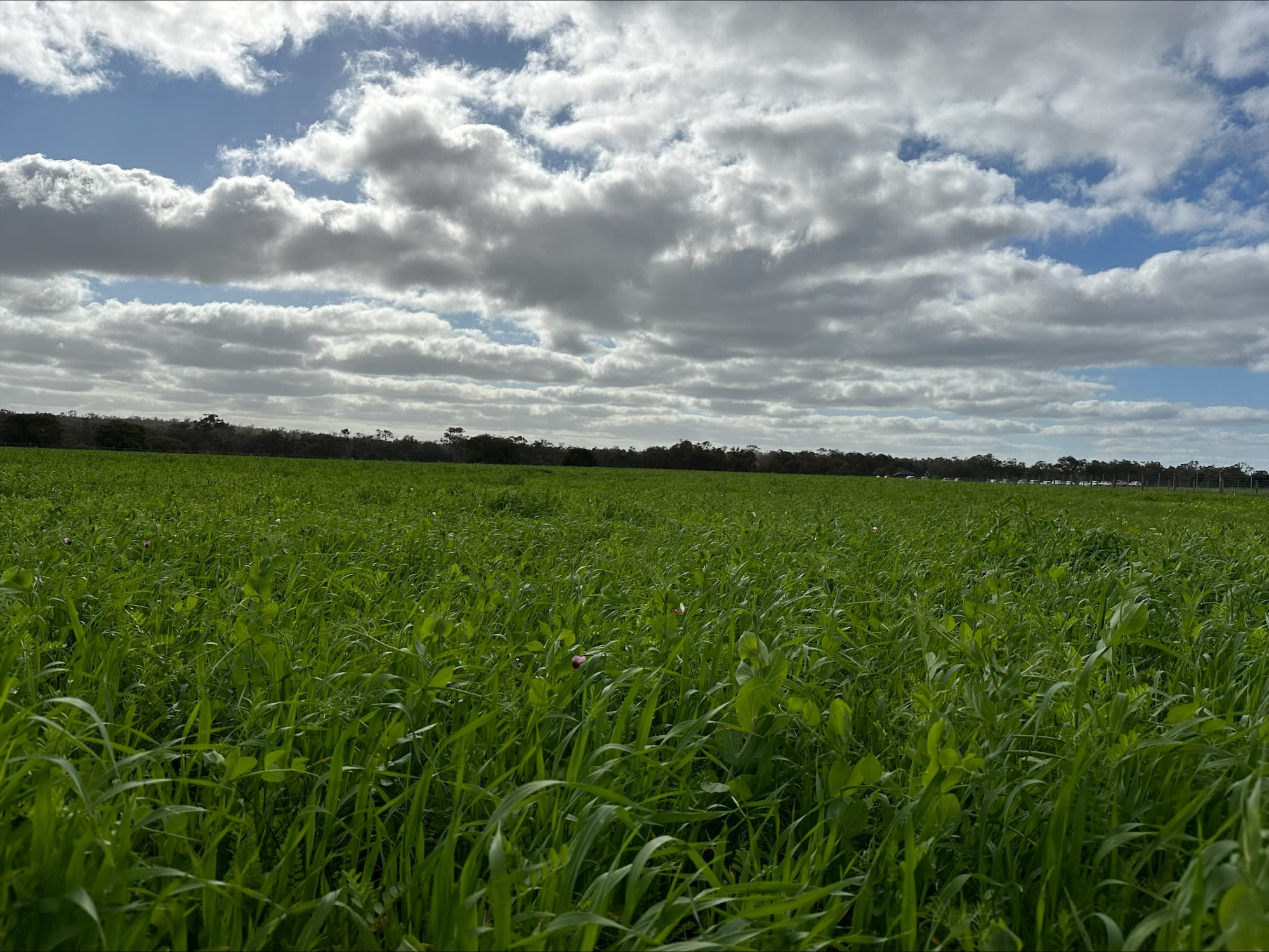
This Lower Blackwood LCDC project was hosted by Dairy Farmers Neville, Gary & Elaine Haddon and is led by consultant & agroecologist Mark Tupman of Productive Ecology with assistance from agronomist Anthony Quinlan of Soil Dynamics, and agronomist Graham Mussell of Graham Mussell Consulting.
The project was supported through funding from Soil Wise. Soil Wise is funded by the National Landcare Program Smart Farms Small Grants – an Australian Government initiative. It is supported by Healthy Estuaries WA – a State Government program



